Las Vegas is such a great place to visit as there’s always so much to see and do. Today, we’re 50 miles off the downtown Las Vegas strip on a day trip to explore the incredible Valley of Fire State Park and check out its natural beauty.
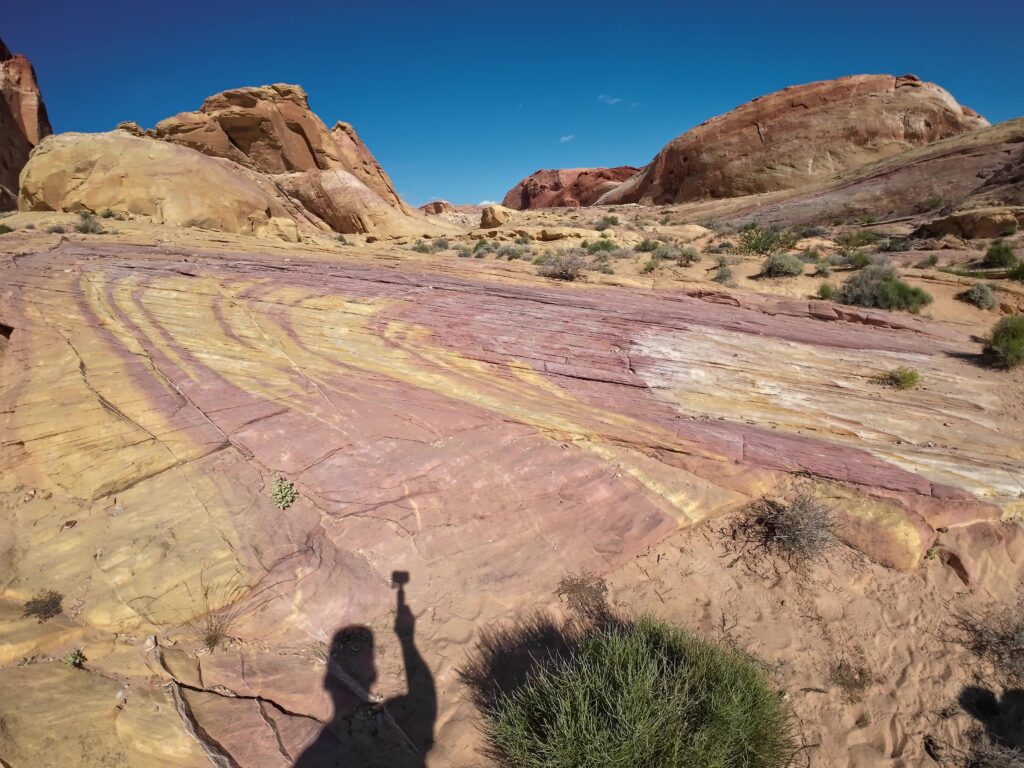
Join us as we explore the Valley of Fire State Park.
What is the Valley of Fire State Park?
The Valley of Fire State Park is known for its incredibly colorful landscape including numerous shades of red, purple, gray, tan, among many other shades of color. With its unique rock formations, intriguing hikes, ancient petroglyphs, and vibrant colors, it’s no wonder this park has been featured in numerous movies and TV shows throughout the years. This park, covering close to 46,000 acres in the Mojave Desert, is a hidden gem located 55 miles Northeast of Las Vegas, Nevada.
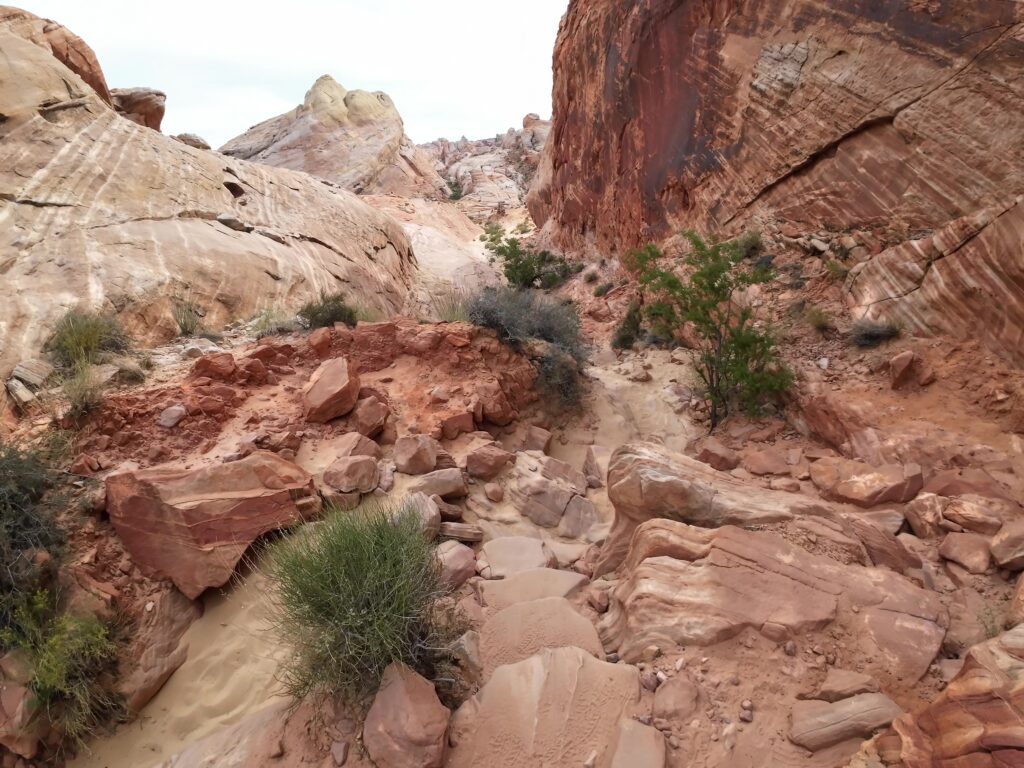
The Valley of Fire contains uniquely red Aztec sandstone outcroppings amongst colorful limestone mountains. The red rocks were built up from the remnant of sand left behind by the wind after inland seas subsided in this area and the land rose. The wind and sand continues to carve away at the sandstone and are attributed to many of the formations in the park.
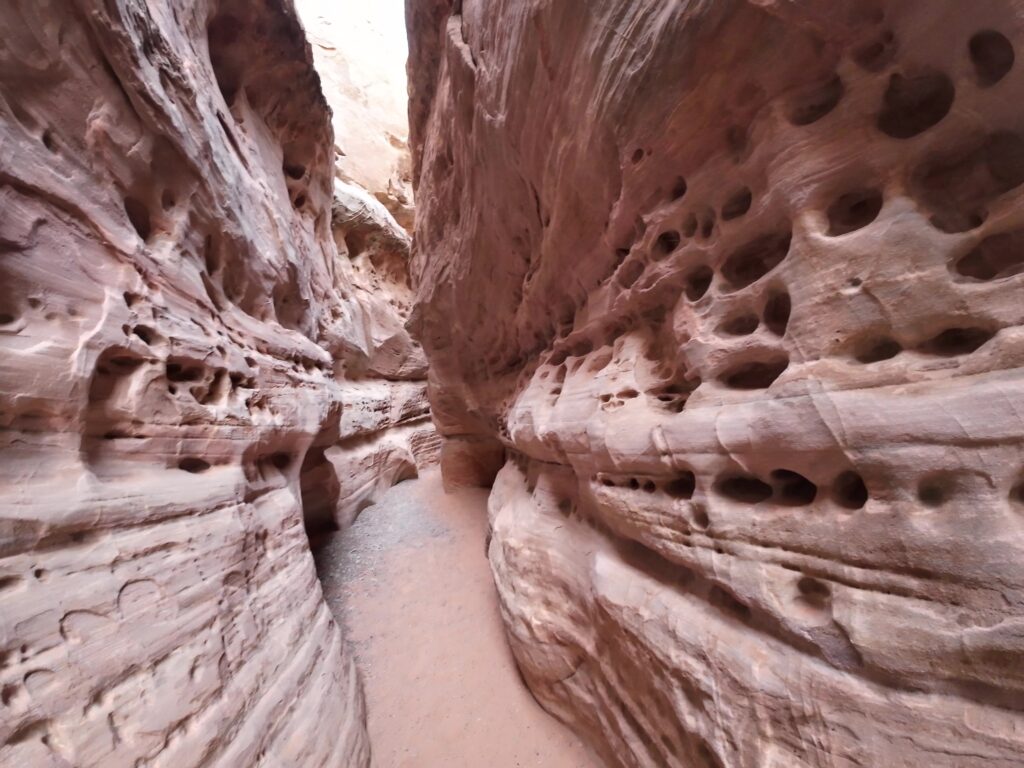
This land was occupied close to 11,000 years ago. Petroglyphs carved into the rocks by ancient people are evidence of people living and traveling through this area from as far back as 2,500 years ago. Early Pueblo encampments were in this area. Paiutes were living in this area when the Mormons came to settle the south portion of the Moapa Valley.
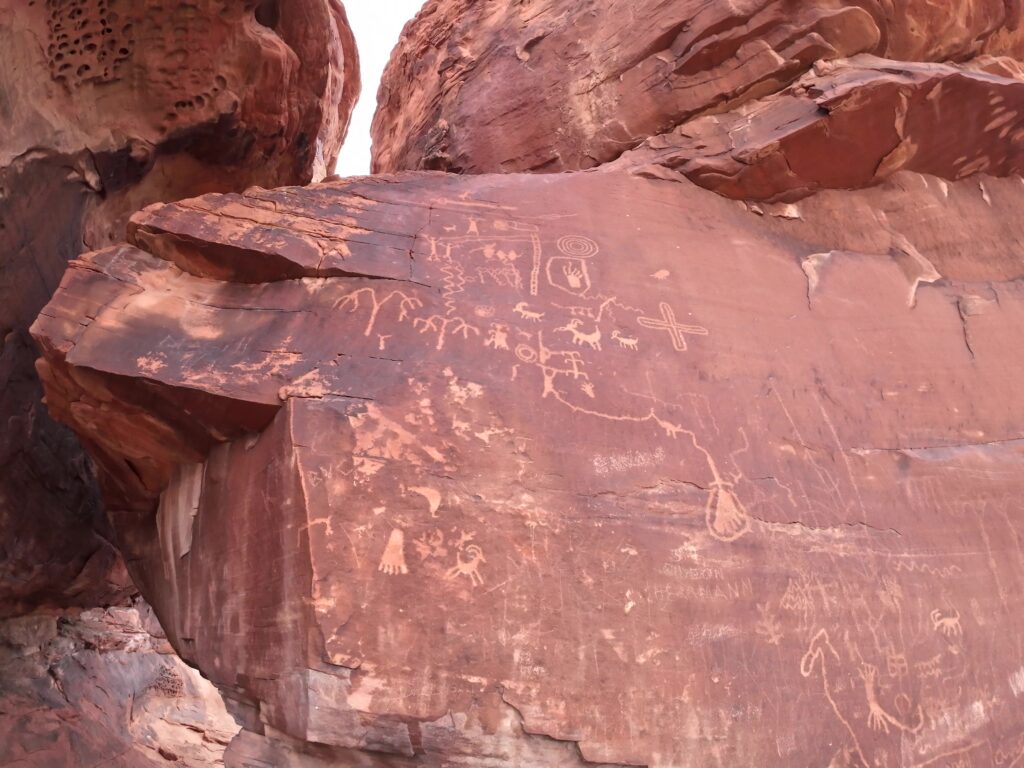
Attractions
Several of these attractions included hikes but some were close to roads and parking areas as well. Let’s take a look at these attractions:
Arch Rock
Arch Rock Valley of Fire is a stunning natural rock formation located within Valley of Fire State Park in Nevada. This unique arch, formed from sandstone millions of years ago, has been carved by the forces of wind and water into a delicate and awe-inspiring structure. The striking red coloration of the rock against the blue desert sky creates a dramatic contrast that draws in photographers and nature enthusiasts from around the world. The geological significance of Arch Rock Valley of Fire cannot be overstated, as it serves as a testament to the power and beauty of nature’s forces.
Atlatl Rock (Petroglyphs)
Atlatl Rock is a stop in the park to get to see petroglyphs up close. These drawings are on a boulder about fifty feet above ground. A metal staircase allows visitors to see the rock art close up. The Atlatl Rock stop is on a Scenic Loop Road on the west side of the park adjacent to the Campground. There is practically no trail (very short walk from the parking lot) but does require climbing the staircase. The stop also has the Atlatl Rock PIcnic Area as well.
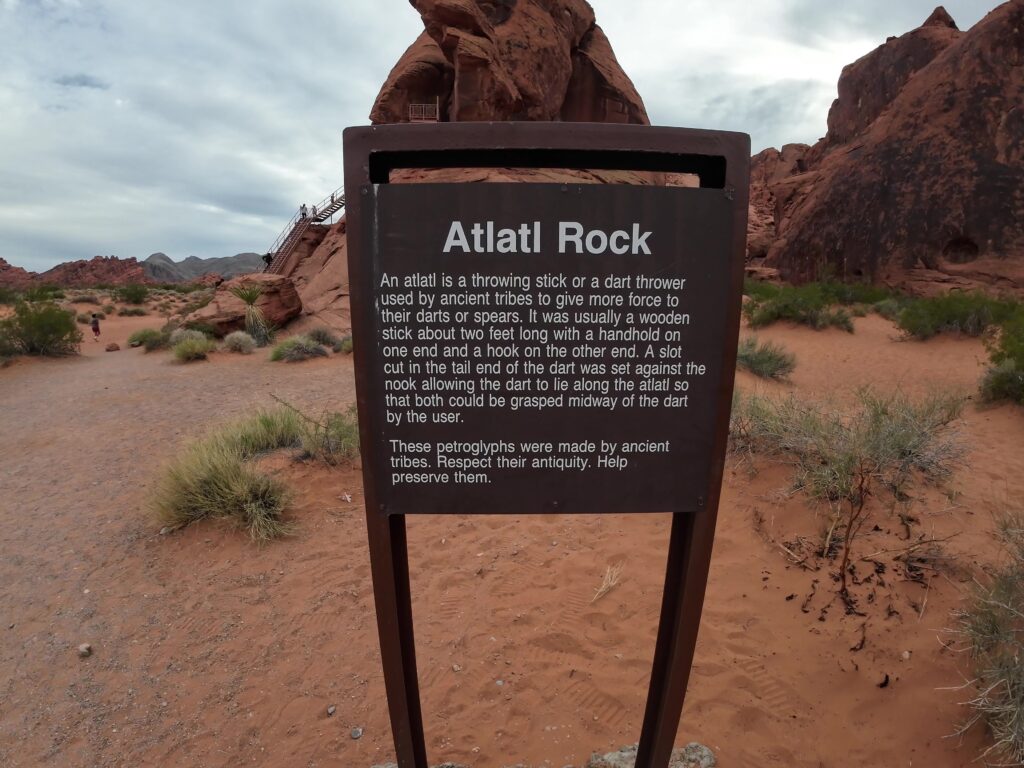
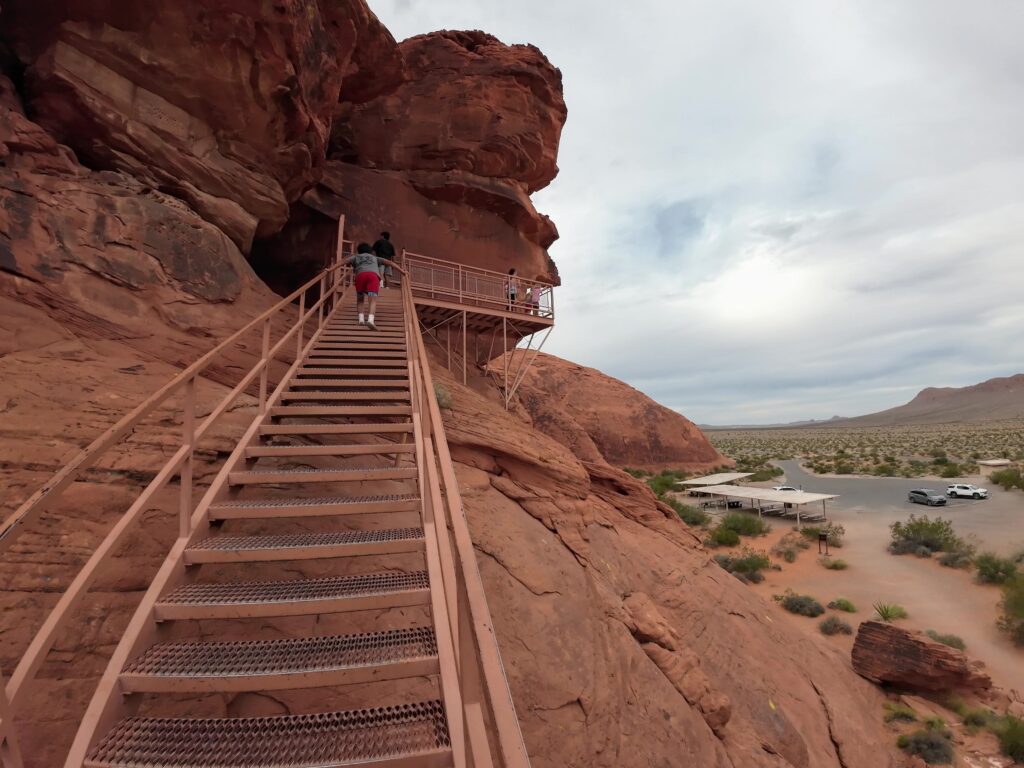

Bee Hives
The Beehives are cool red rock formations made of sandstone that show off how awesome nature can be. They have lines going in different directions, kind of like grooves. These lines are called geologic cross bedding. Each layer of rock represents different layers of silt that were laid down at different times. The way the lines are angled can tell us which way the wind or water was moving when the rock was formed. Cross bedding is something you can find in sand dunes, beaches, and river sediments. You can walk on a short path through the rocky structures. This is not a trail so you can stop and check out the rocks pretty quick.
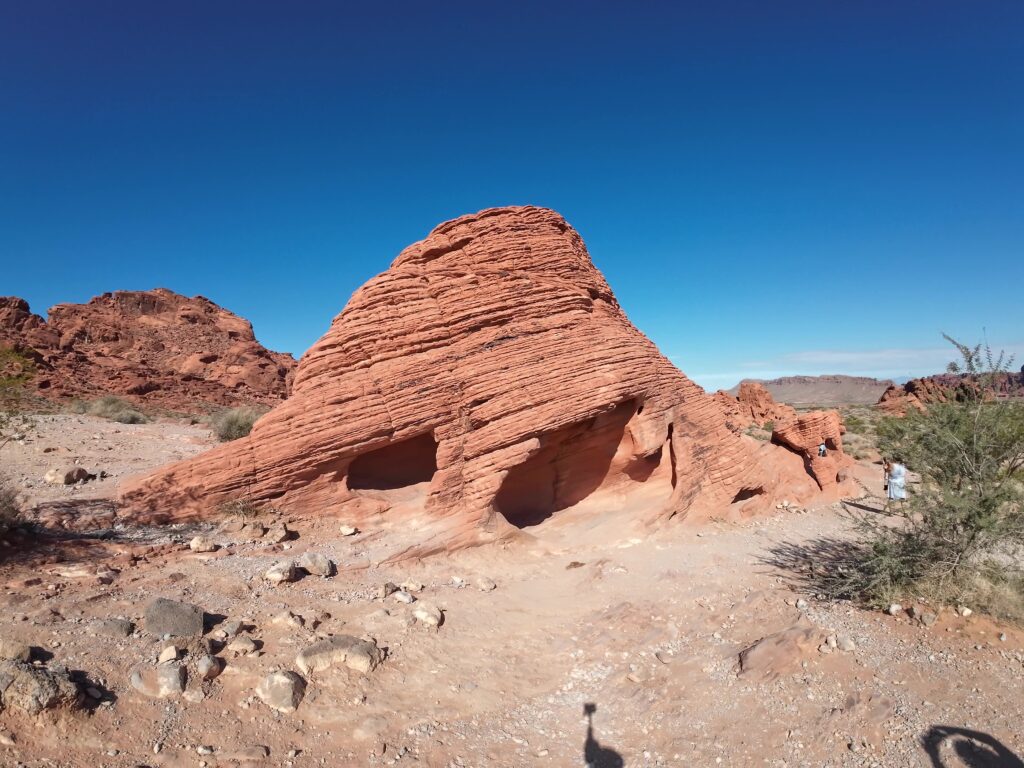
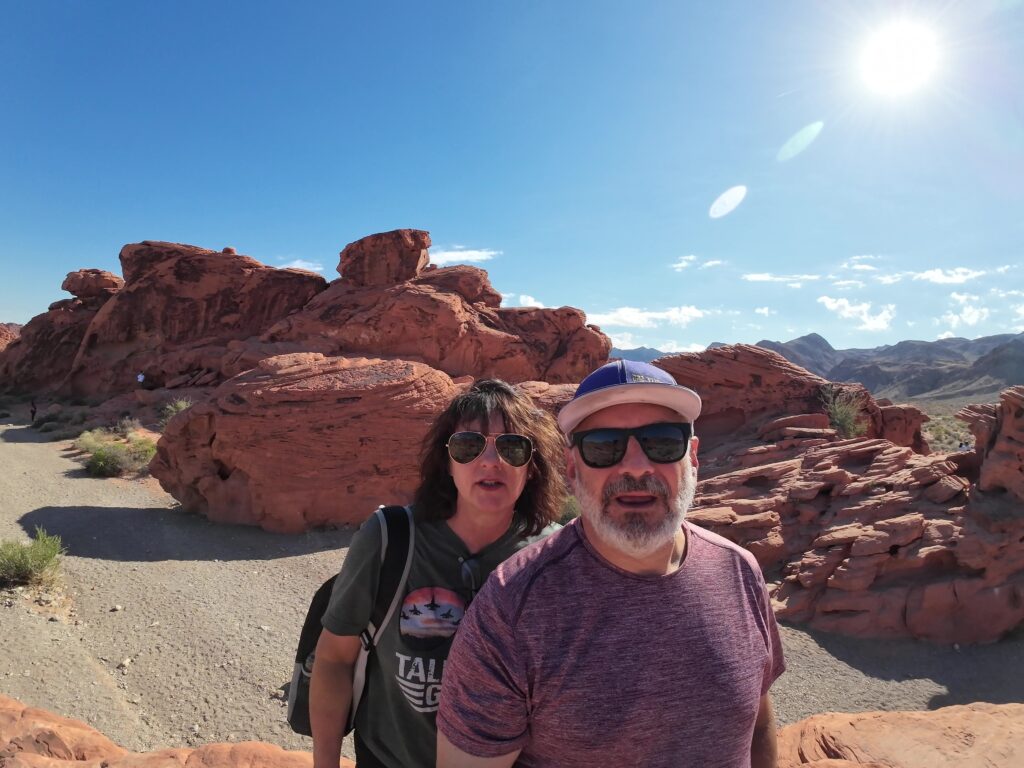
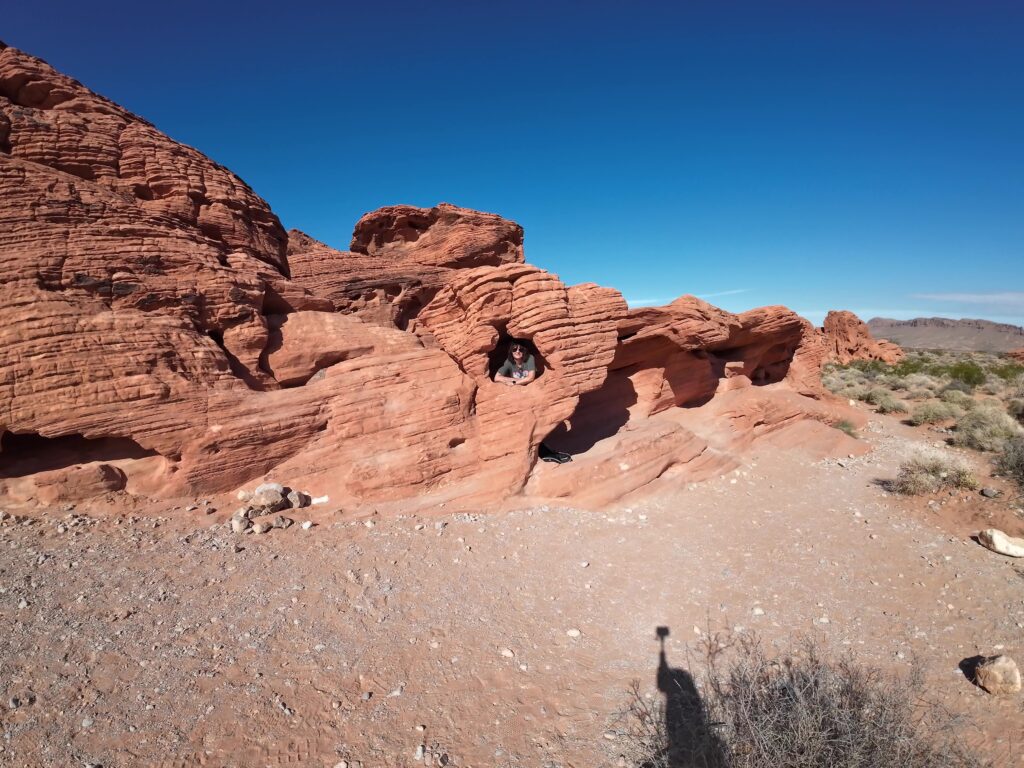
Elephant Rock
Elephant Rock is this really cool rock formation in the Valley of Fire State Park. Some people think it looks like a natural arch, while others say it looks like a giant elephant trunk turned to stone! You can check it out on a short 0.3-mile hike starting from the parking area near the east entrance of the park. If you’re coming from Lake Mead, Elephant Rock is the perfect first stop. And if the entrance booth is closed, you can pay your entrance fee at the self-pay station in the parking area. It’s definitely worth a visit!
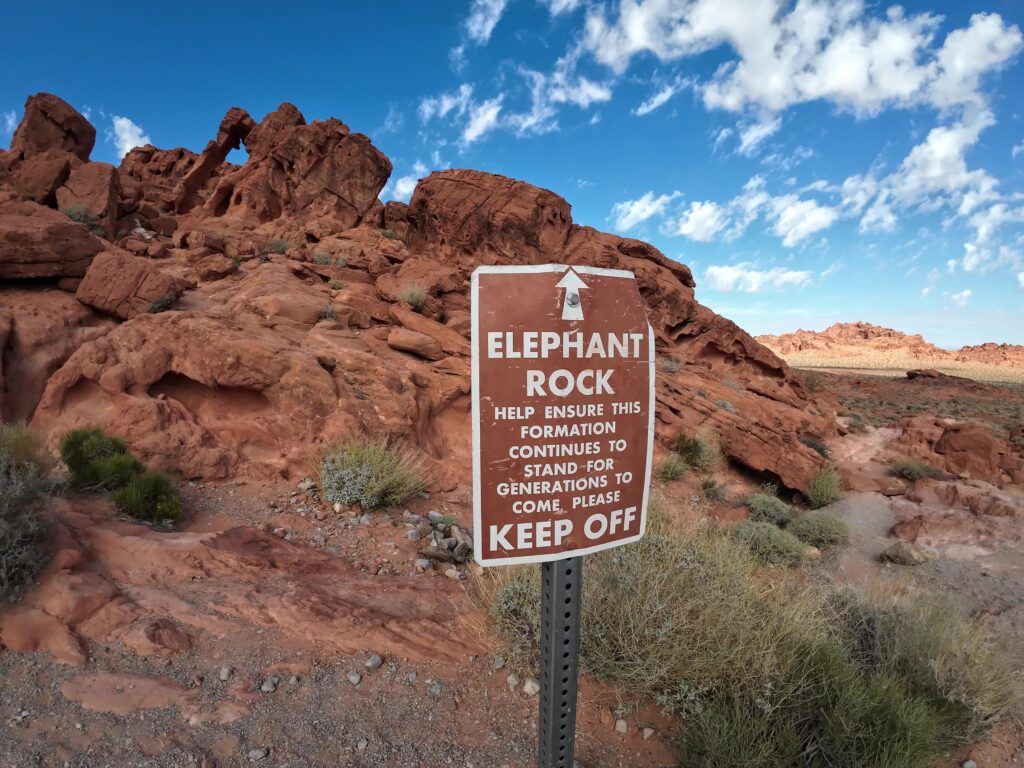
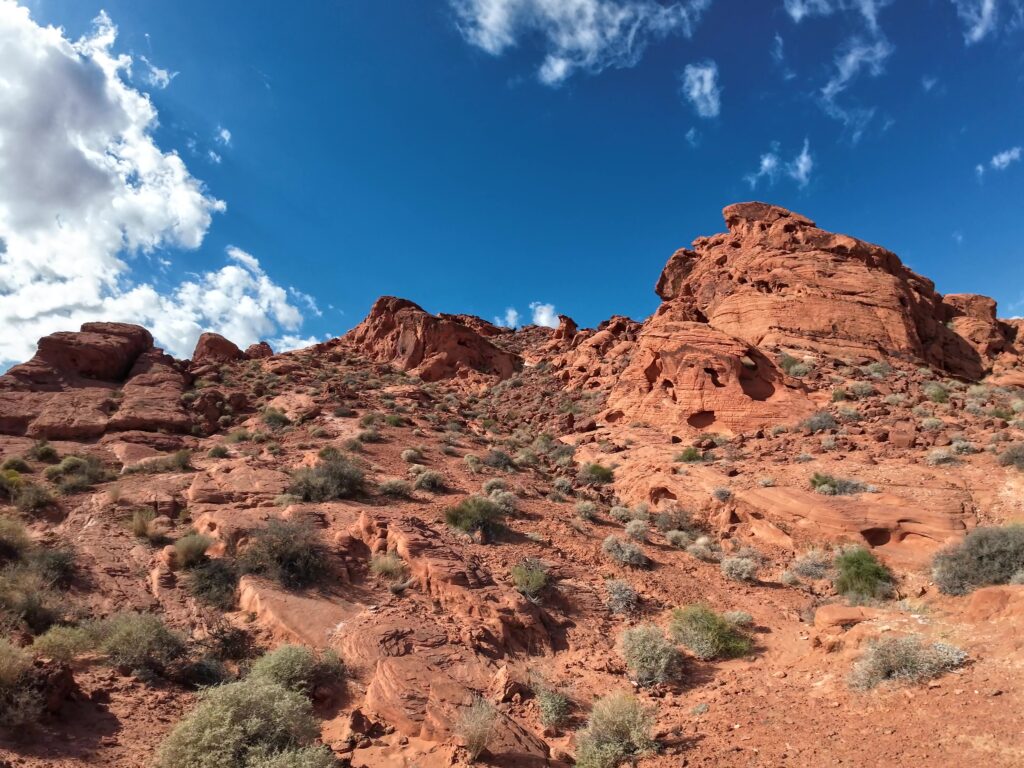
Fire Canyon
The Fire Canyon overlook provides impressive views in every direction from the overlook parking area. But the highlight is definitely the distinctive red and white sandstone formations of Fire Canyon and Silica Dome. The color contrast is striking!
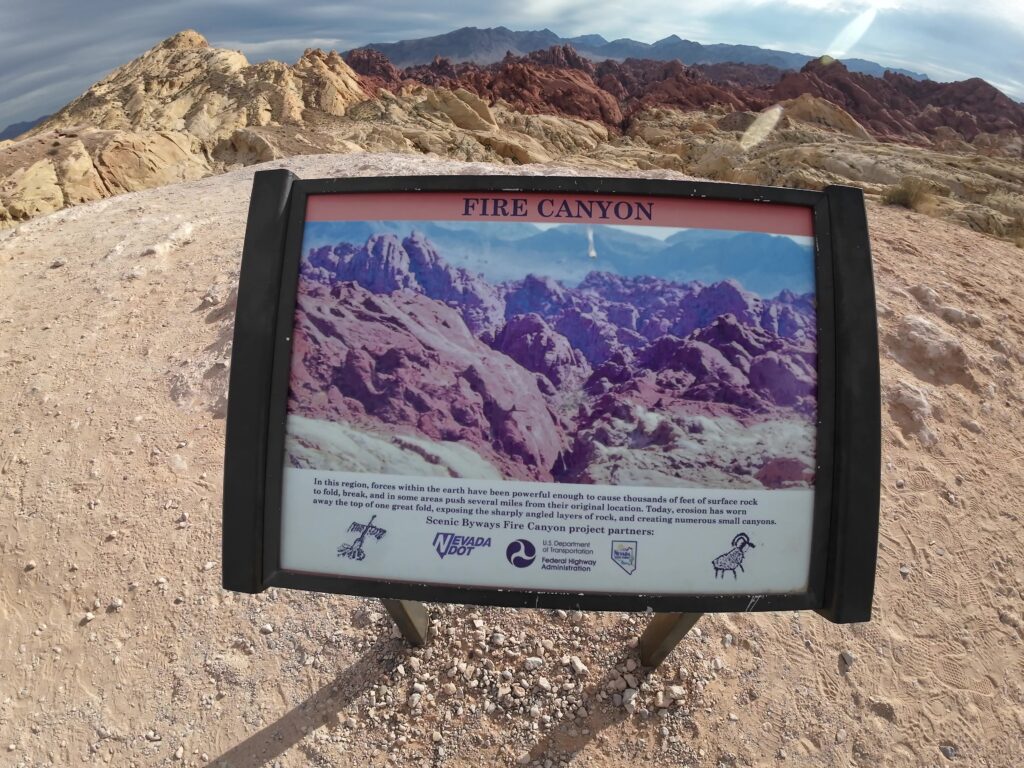
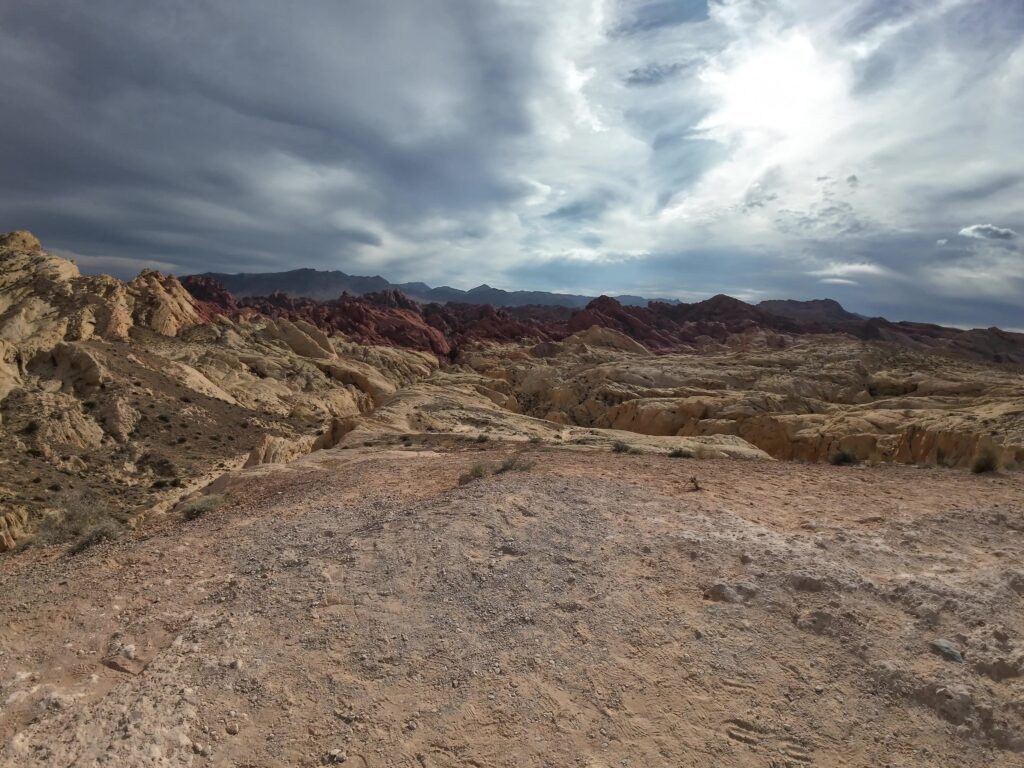
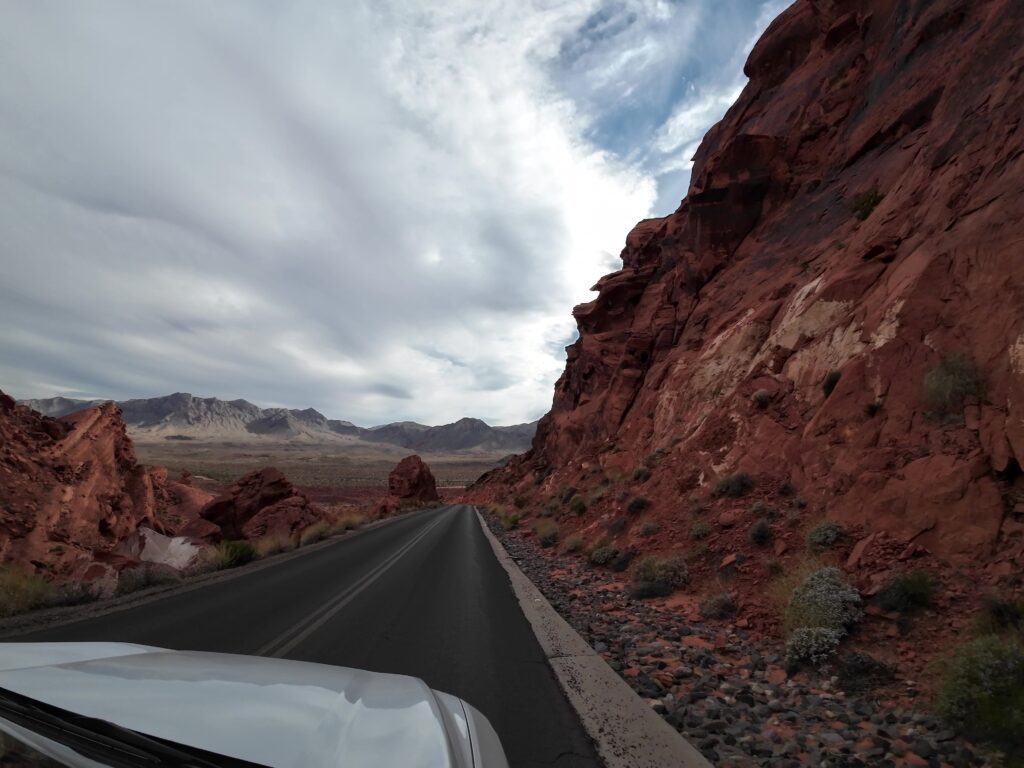
Fire Wave and Seven Wonders Trail
The Fire Wave Trail and the Seven Wonders Trail in the Valley of Fire State Park is the most spectacular trail to hike. This hike combines the most popular spot, the Fire Wave, along with a wilder and more exciting route called the Seven Wonders. You’ll see amazing scenery like narrow canyons and colorful sandstone rocks. This two-mile loop is one of the best hikes in Nevada! Just make sure to follow the yellow markers along the way to stay on track. It’s a fun and easy hike for everyone to enjoy!
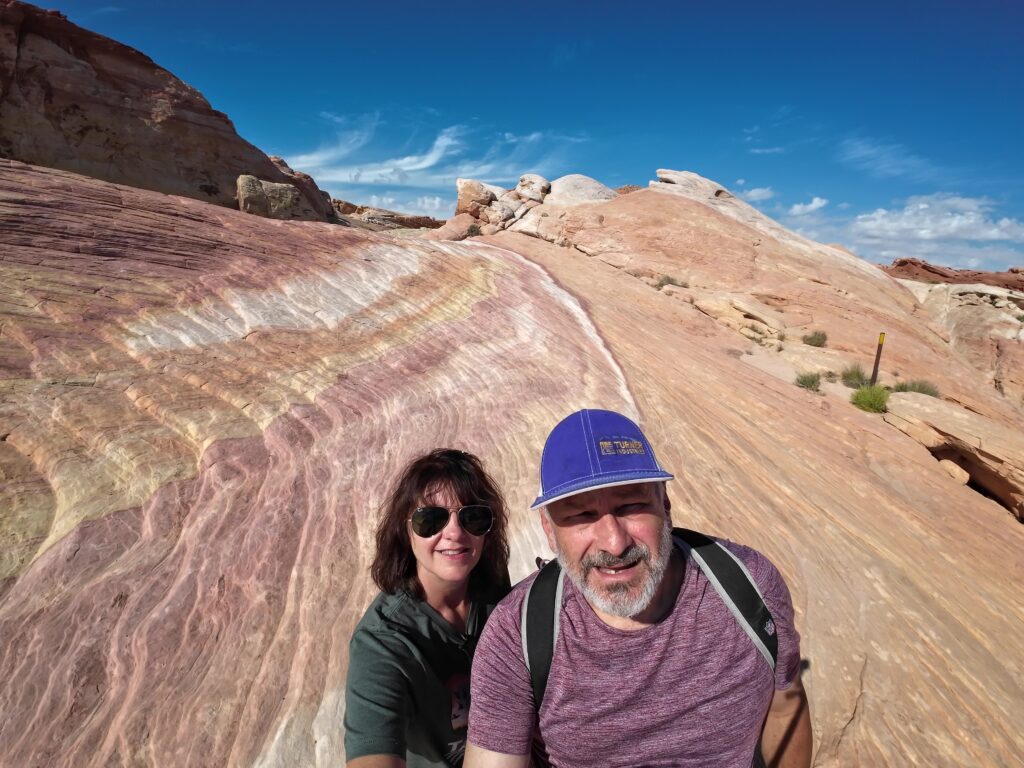
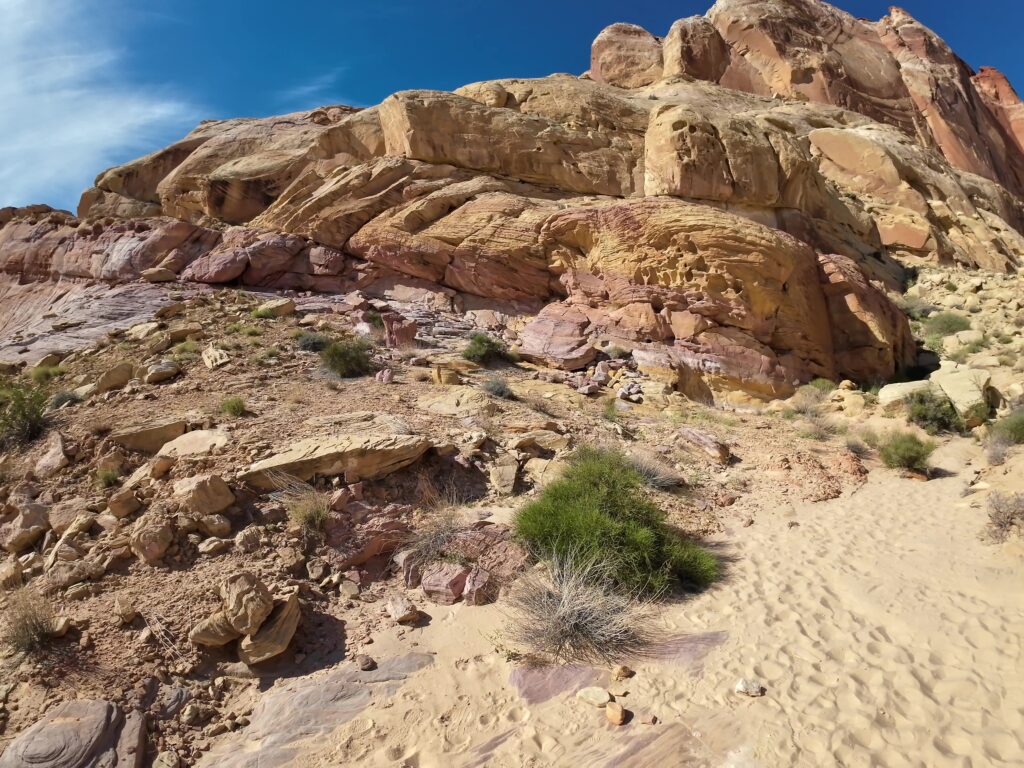
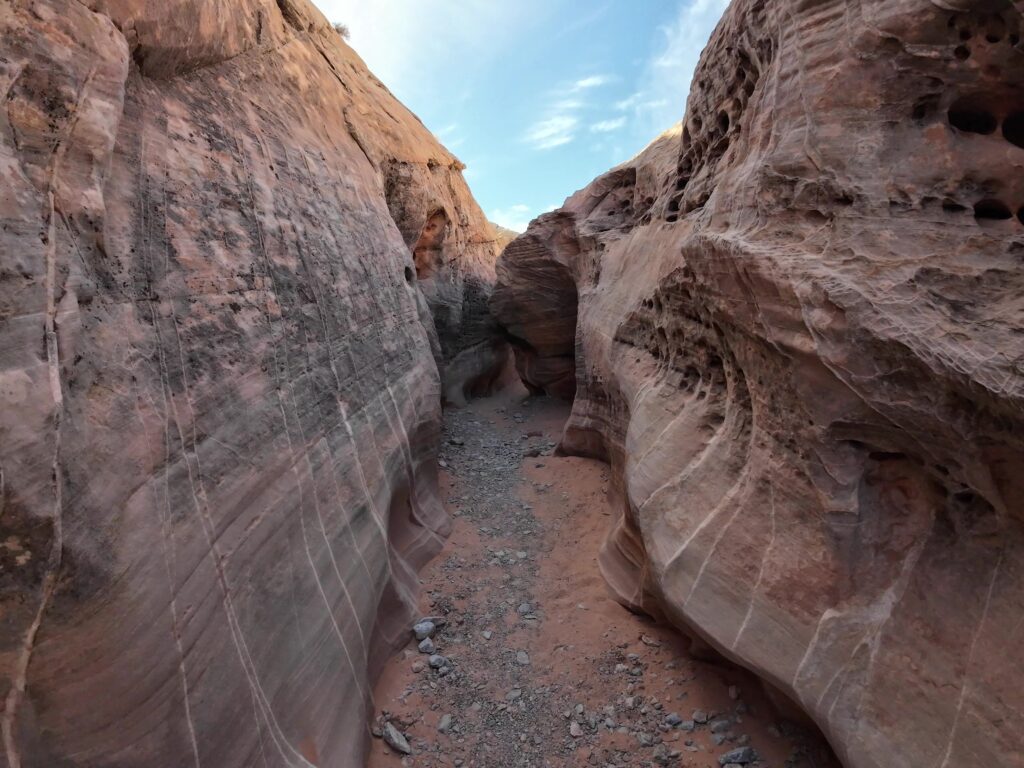
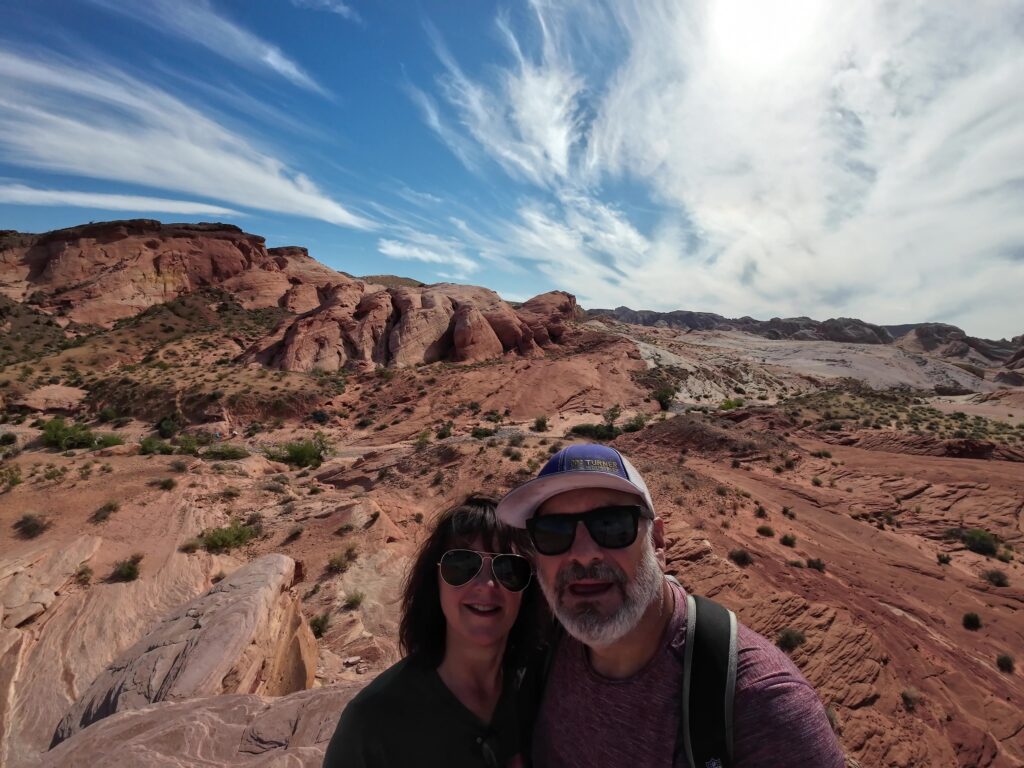
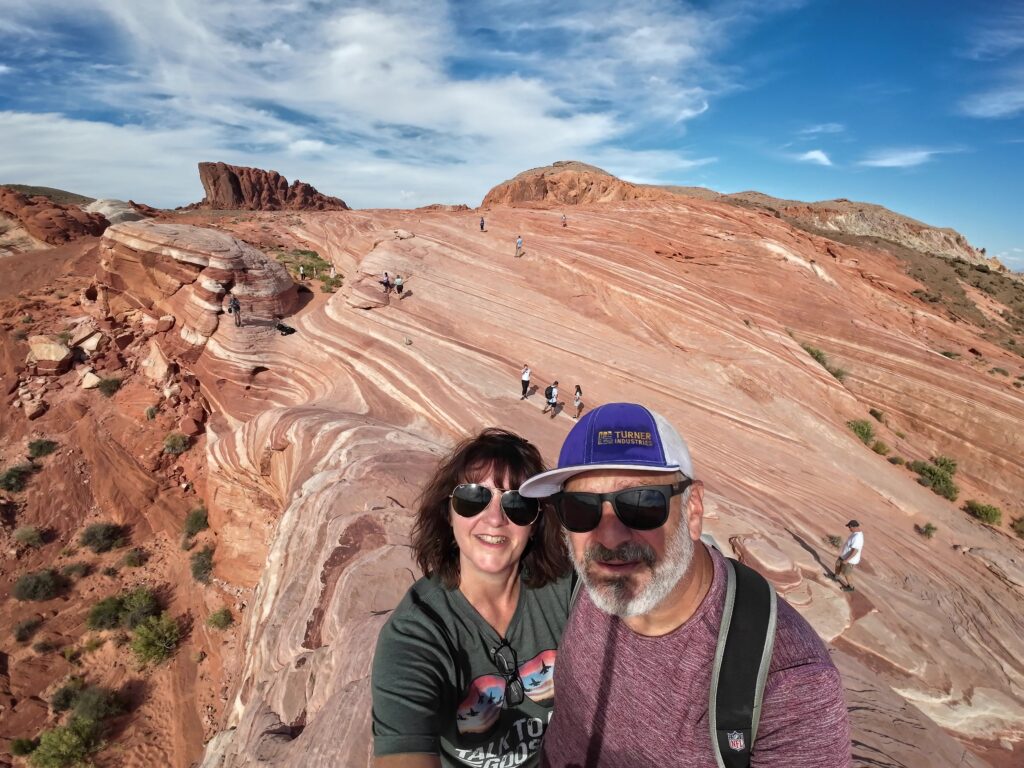
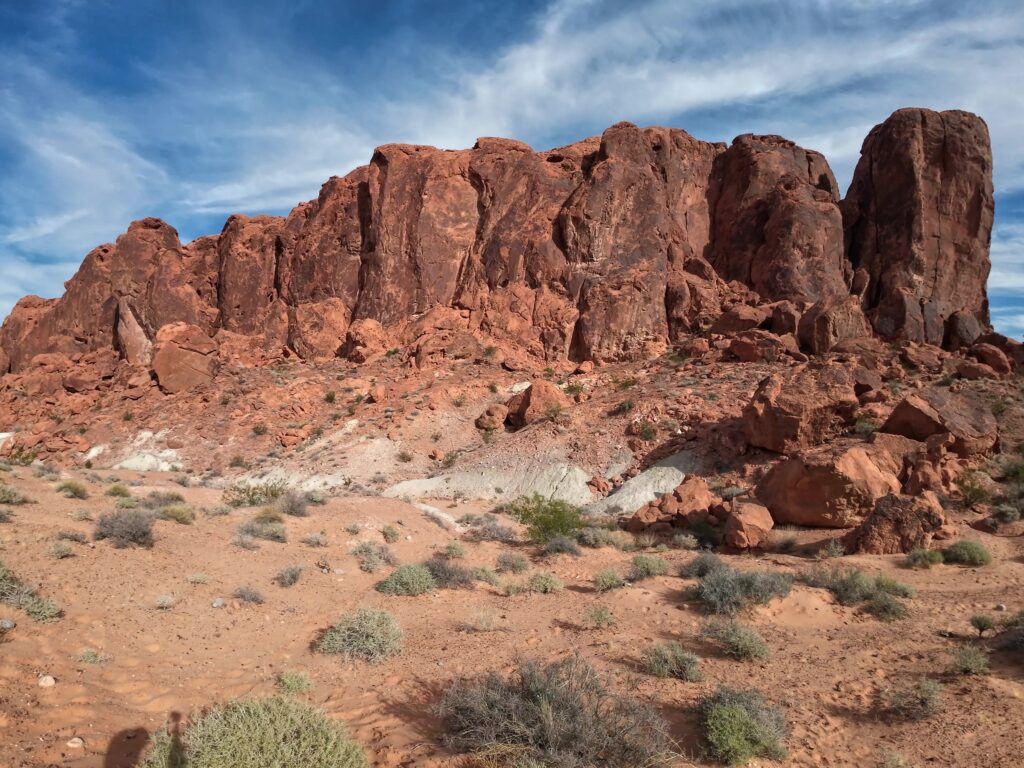
In Memory of John Clark
John Clark was born in Canada in 1844. He immigrated to Southern California. While on a trip from Bakersfield, CA to Salt Lake City, UT, we brought his wagon into this spot. For reasons unknown, most likely thirst, he crawled under his wagon and died. His body, under the wagon, was found in 1914, several days after he passed away.
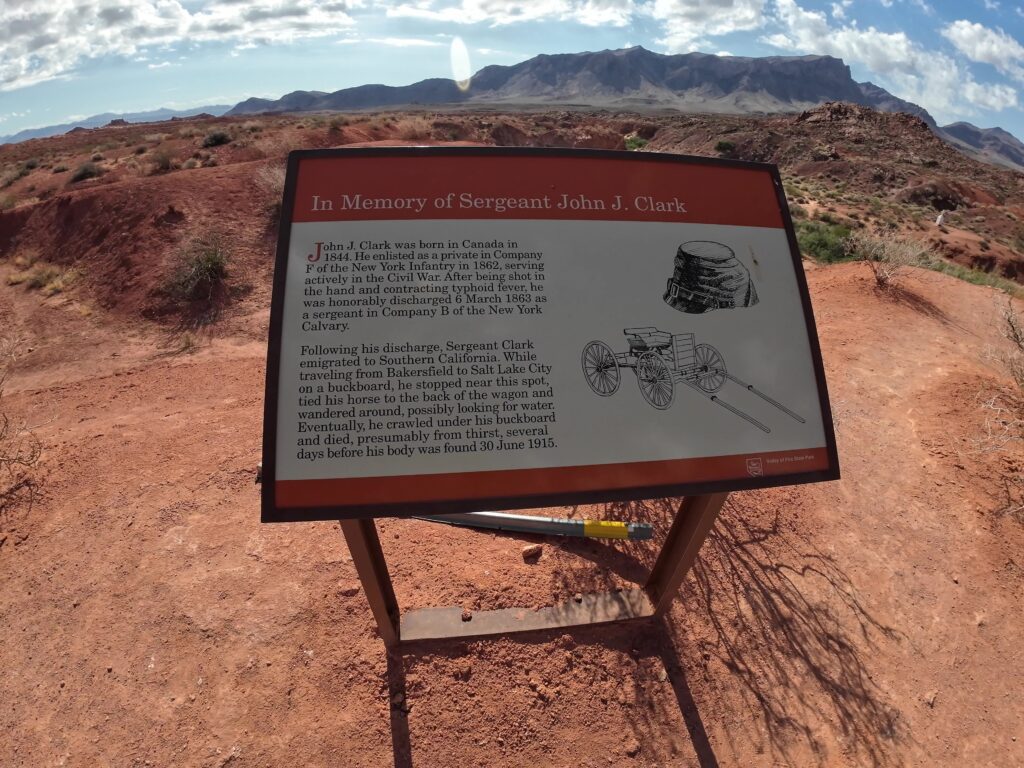
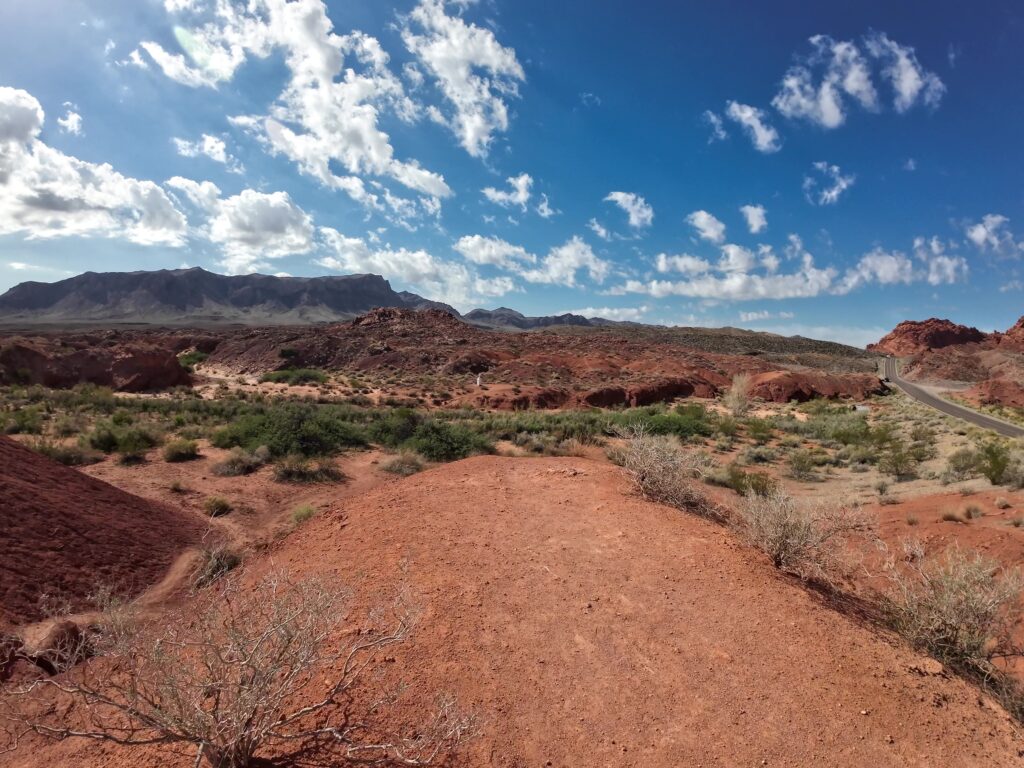
Mouse’s Tank
Mouse’s Tank in Valley of Fire State Park is a renowned archaeological site. This natural rock basin, believed to have been formed by ancient water erosion, serves as a crucial source of water for wildlife in the region. The site also holds significant historical and cultural importance, with petroglyphs dating back thousands of years engraved on the surrounding canyon walls. These native American rock art carvings depict various animals, human figures, and abstract symbols, offering a glimpse into the past civilizations that once inhabited this area.
Rainbow Vista Trail
Rainbow Vista in Valley of Fire State Park is a breathtaking natural wonder characterized by its vibrant hues and sweeping views. Named for the colorful bands of sandstone that streak across the landscape, this geological marvel boasts stunning panoramic vistas that showcase the rich diversity of the surrounding terrain. As one explores this picturesque valley, they are enveloped by a sense of tranquility and awe-inspiring beauty.
Petrified Log Trails
There are two locations in the Valley of Fire State Park that have a few petrified logs. These logs have a chain link fence around them so can’t be touched. If you really want to see thousands of petrified logs, take a look at the Petrified Forest National Park east of Flagstaff.
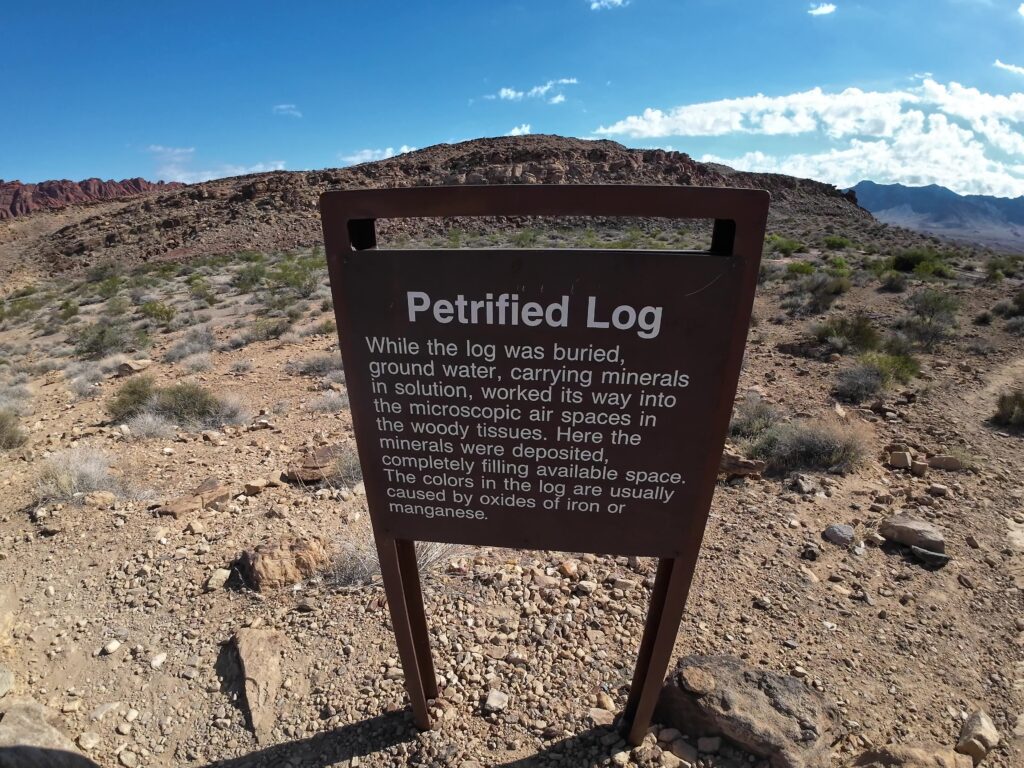
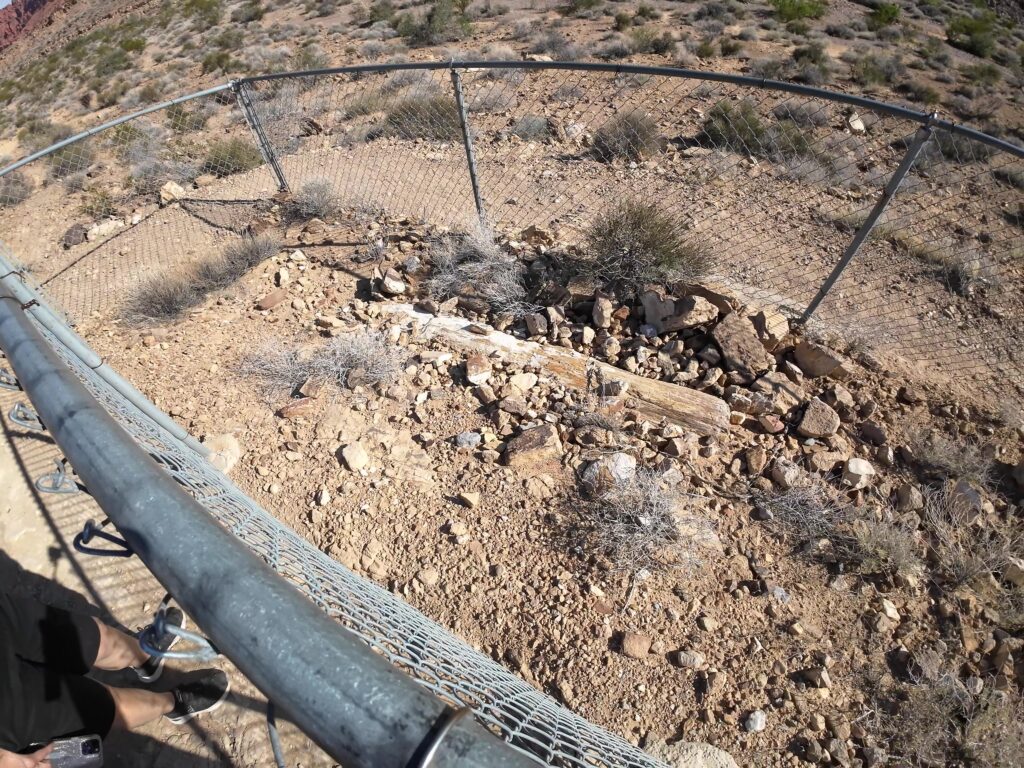
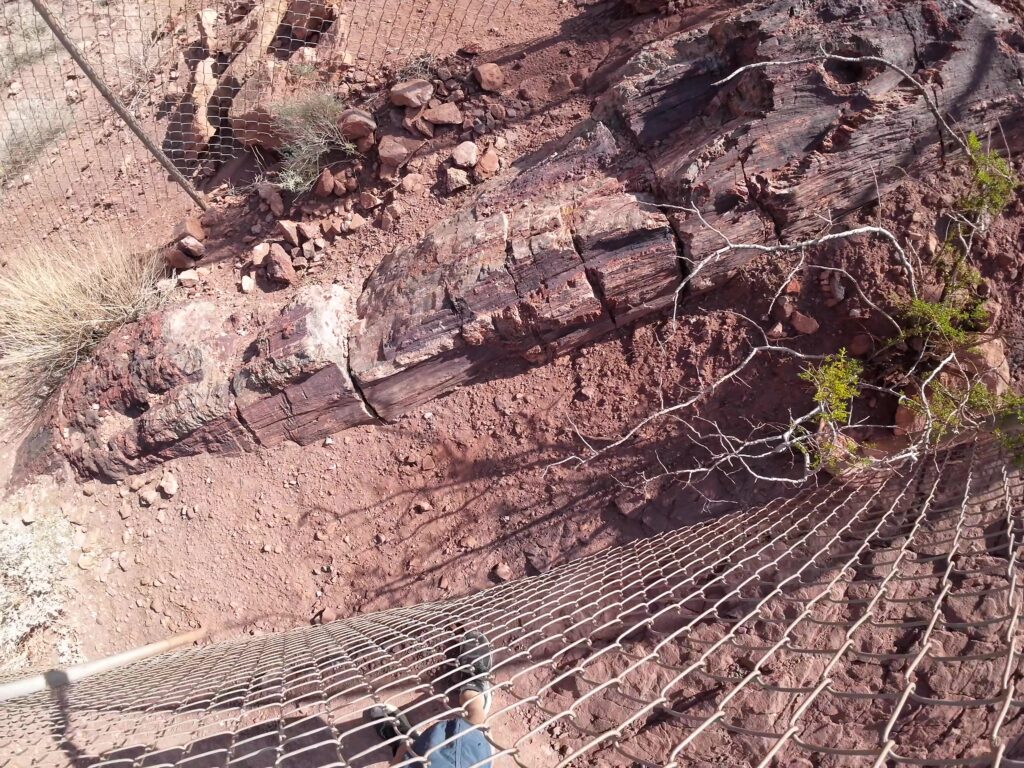
Seven Sisters
The Seven Sisters stop at the Valley of Fire State park is a group of seven tall but eroded rock towers sitting in the sandy desert. They were once part of the larger red formation. These towers are all that is left due to long-term forces and erosion stripping the rock away. You can pull into the parking lot to take a closer look at the Seven Sisters. There is no trail but there are picnic tables if you want to relax and have a snack or lunch..
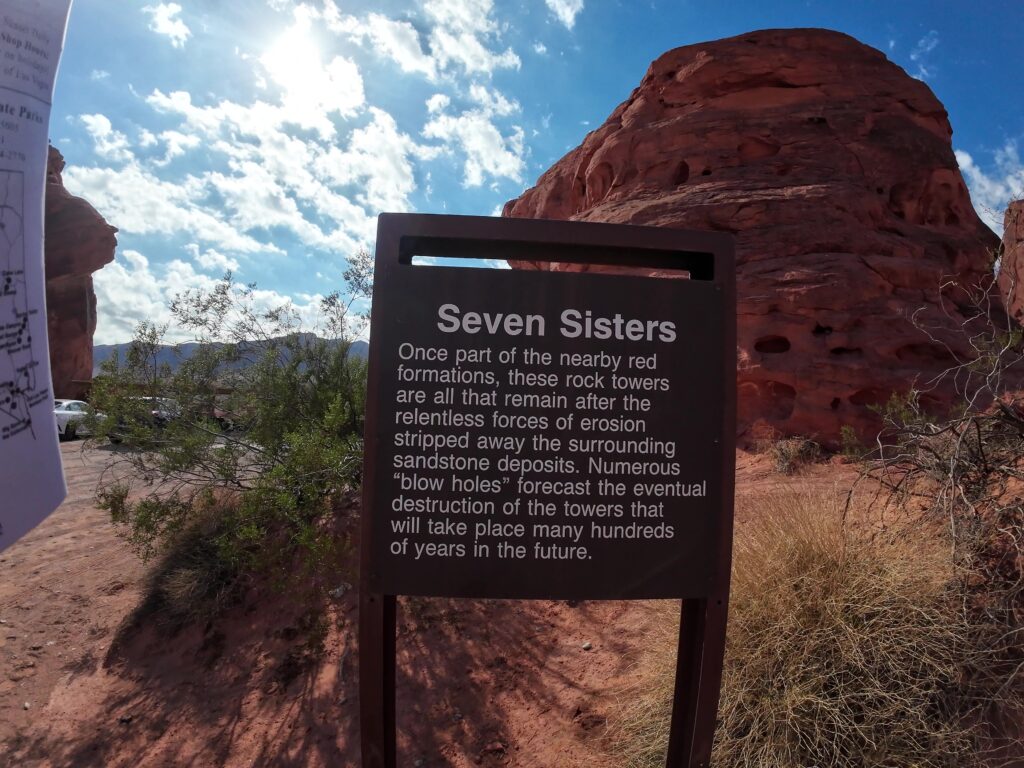
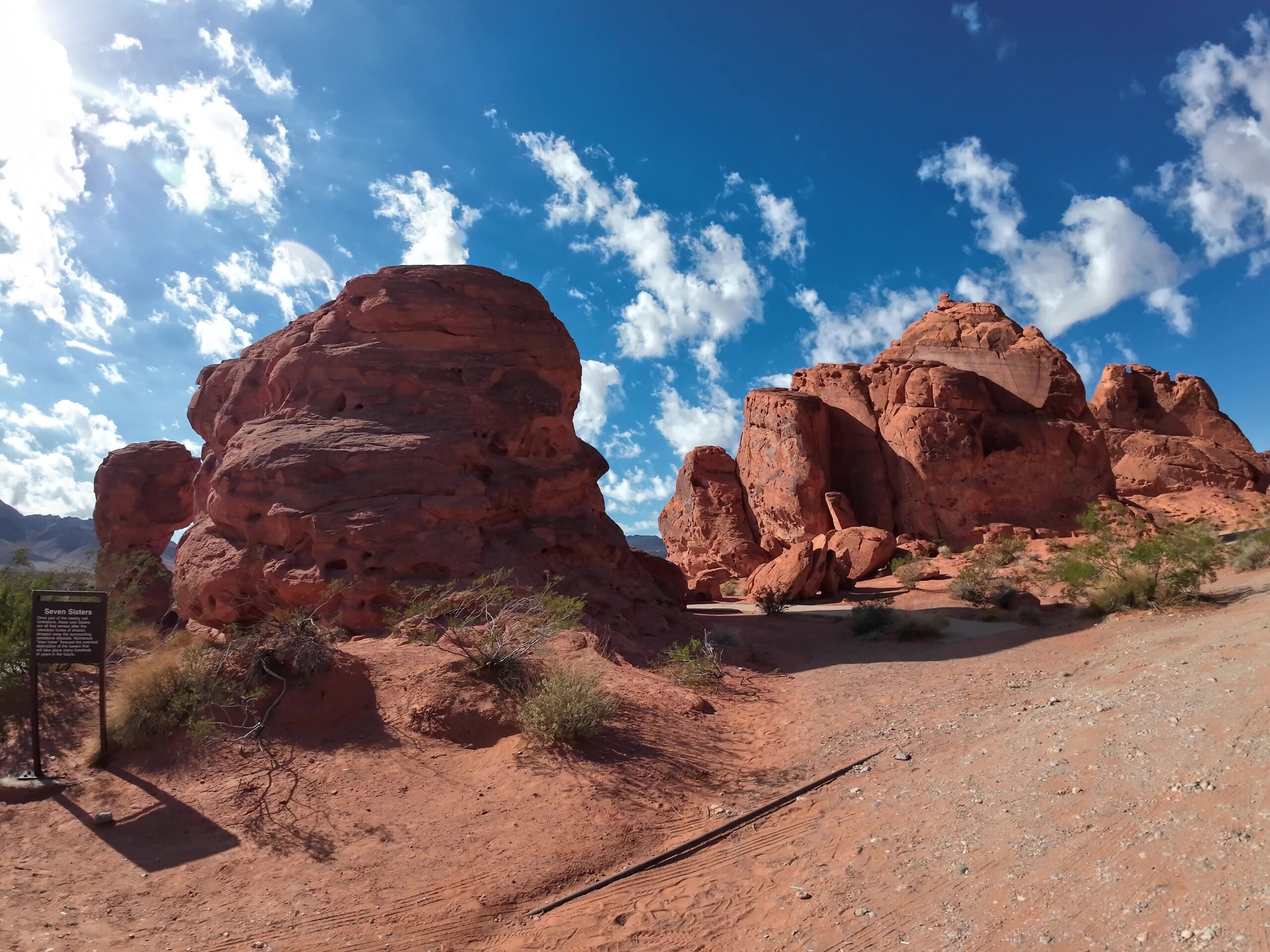
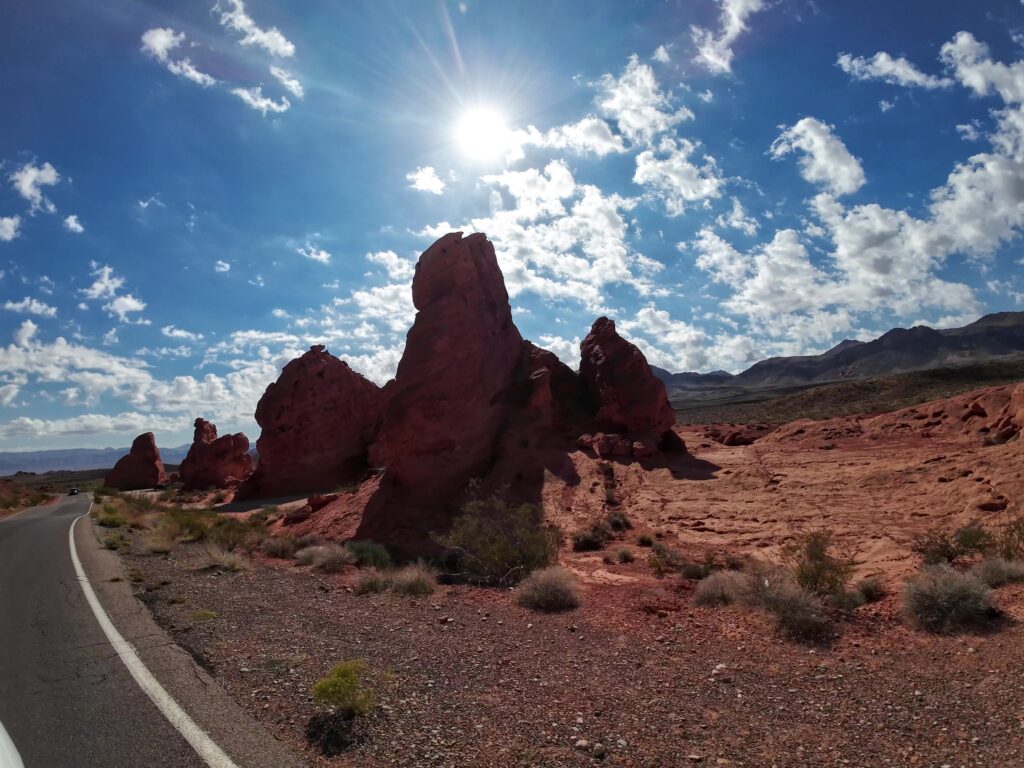
The Cabins
The Civilian Conservation Core (CCC) built the three cabins out of sandstone in 1935. CCC Personnel and other visitors used the cabins while at the park. They are preserved as a reminder of the great work done by the CCC personnel.
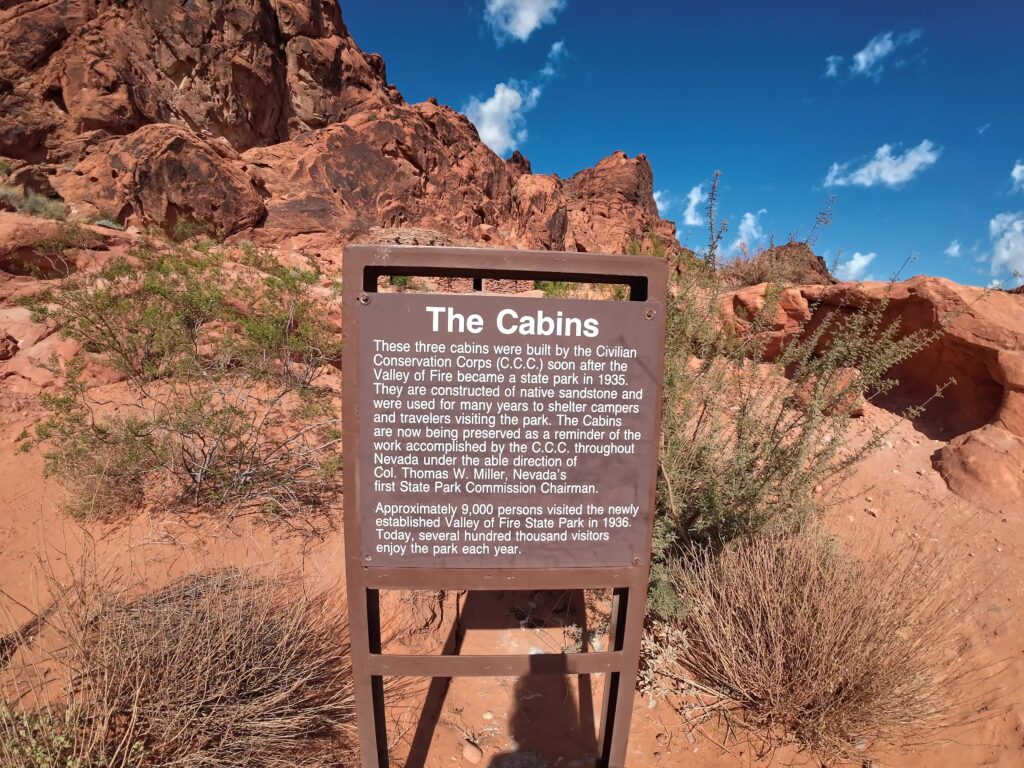
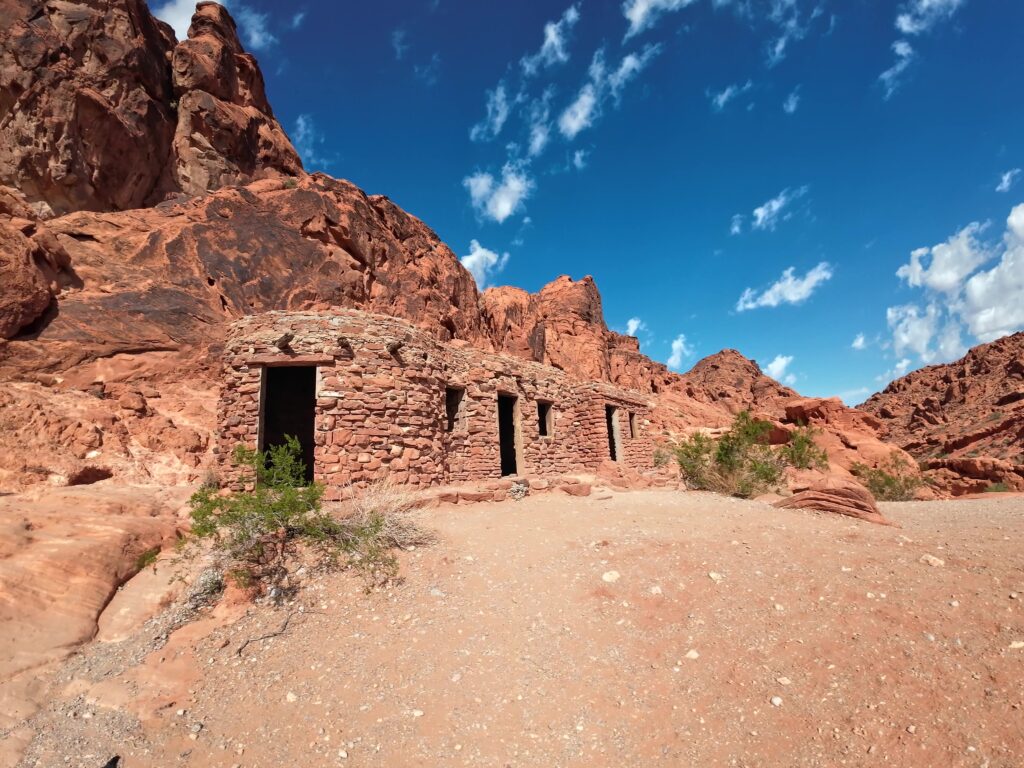
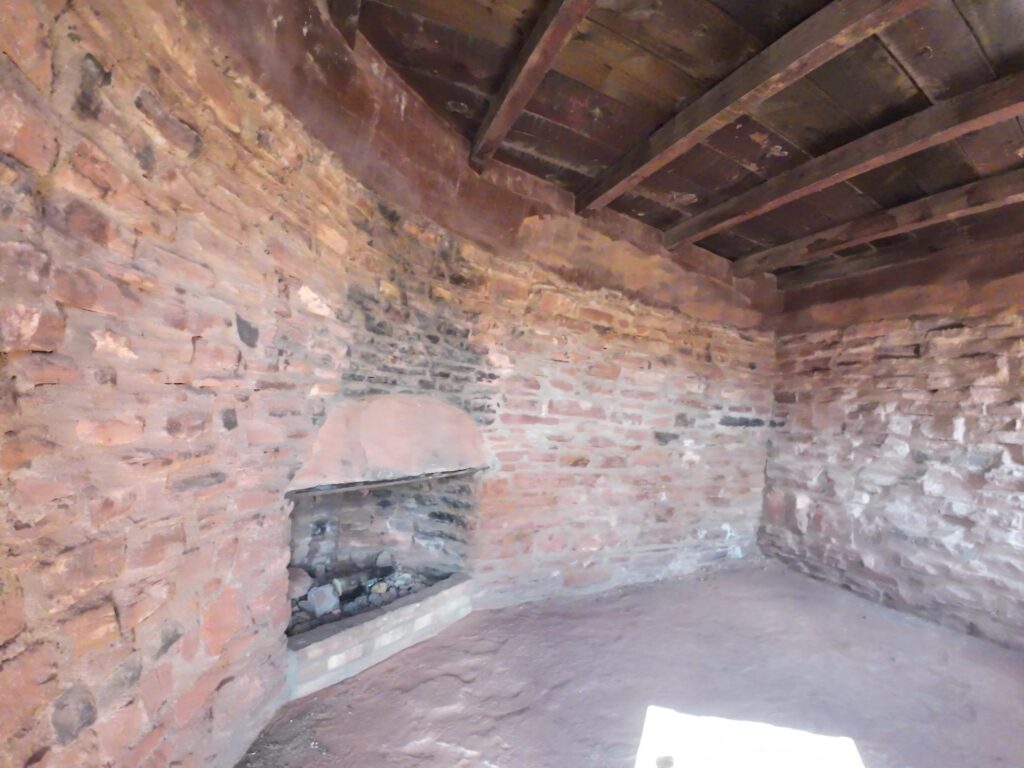
The Lone Rock
The Lone Rock is a quick stop in the Valley of Fire State Park. The name really tells you what it is, which is a large rock sitting all by itself. There are supposed to be some petroglyphs nearby but so signage was present when we drove by it so therefore we didn’t realize it. If you do stop, you may want to check those petroglyphs out as well.
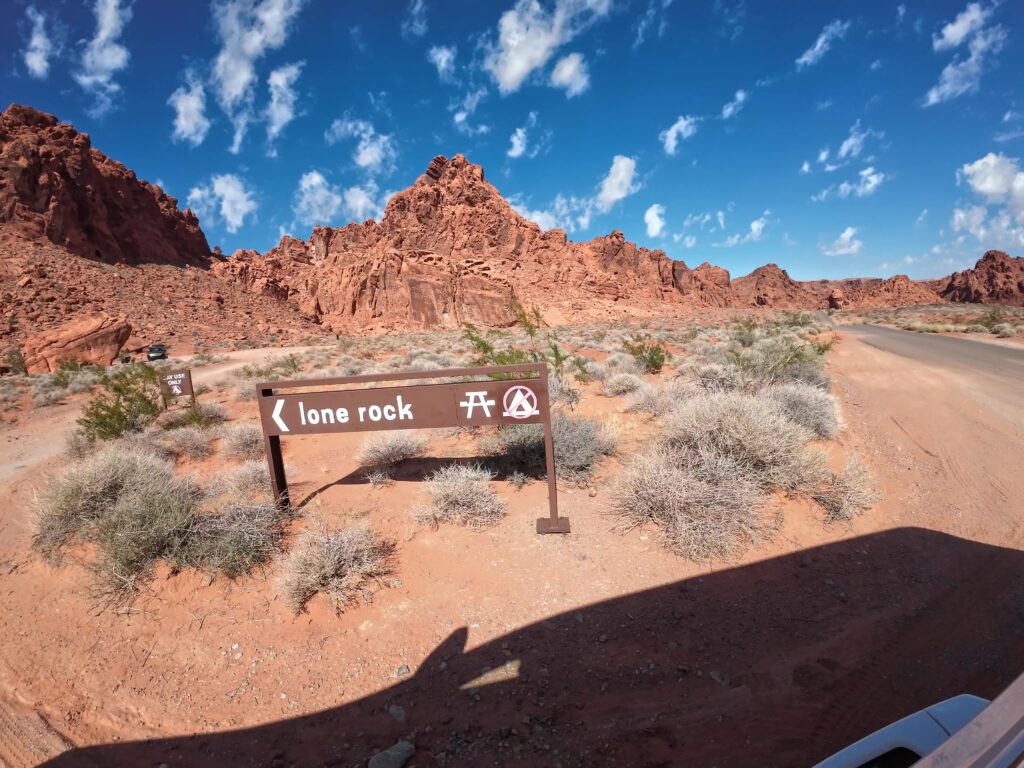
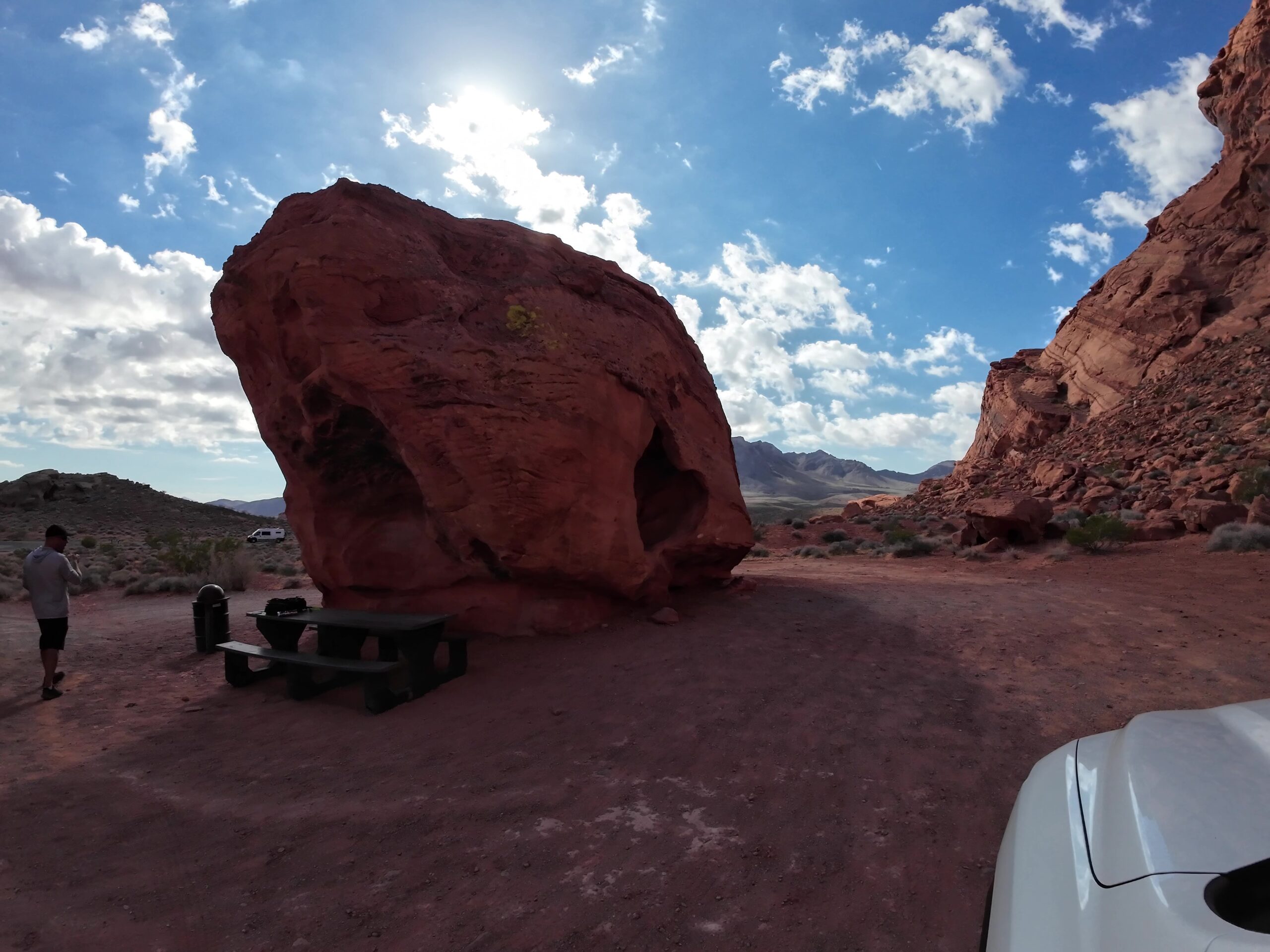
White Domes
The White Domes Loop Trail in Valley of Fire State Park is a super cool 1-mile trail that’s not too hard to walk. As we explored White Domes Trail, we strolled in the cool shadow of massive sandstone formations, meandered through narrow slot canyons, and marveled at the brilliant layers of rock. The trail starts with a downhill slope, but after that, it’s pretty easy with just some gentle hills. It takes about 30 minutes to walk the whole loop and get back to where you started. Plus, there’s an old movie set from a western film you can check out!
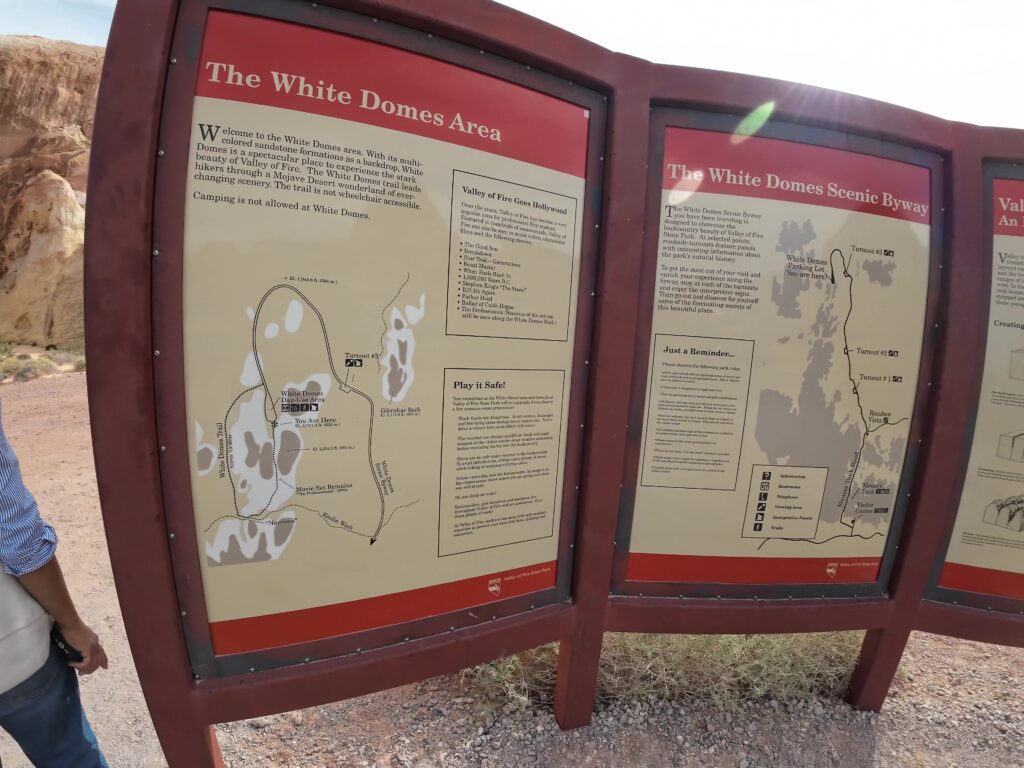
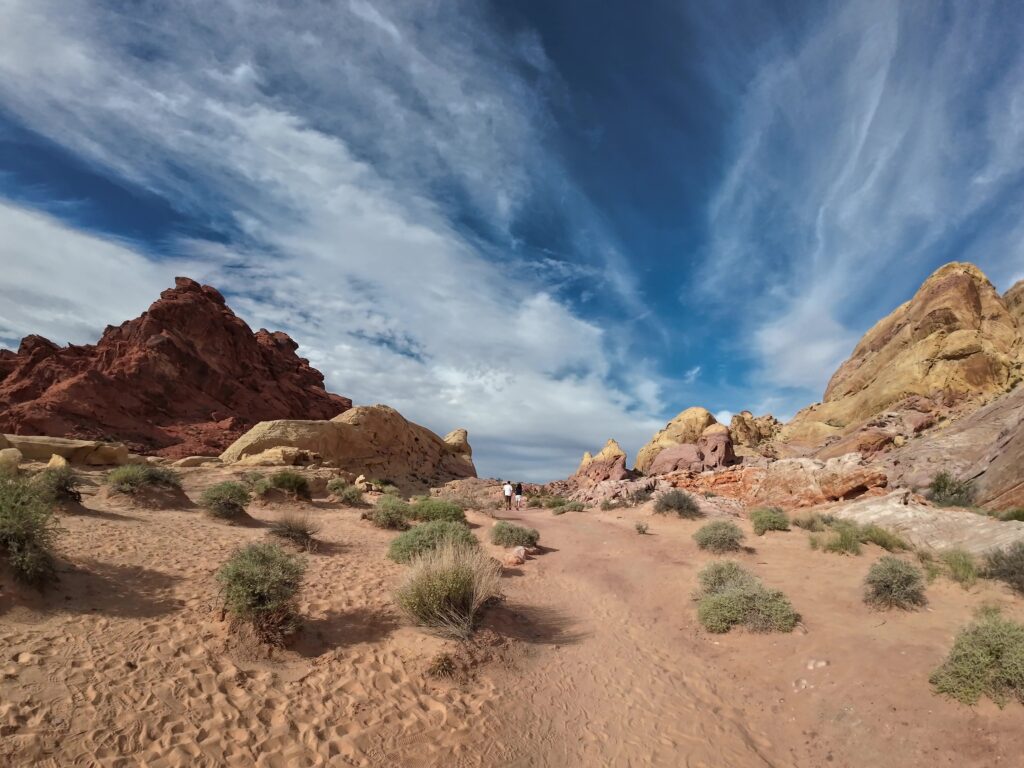
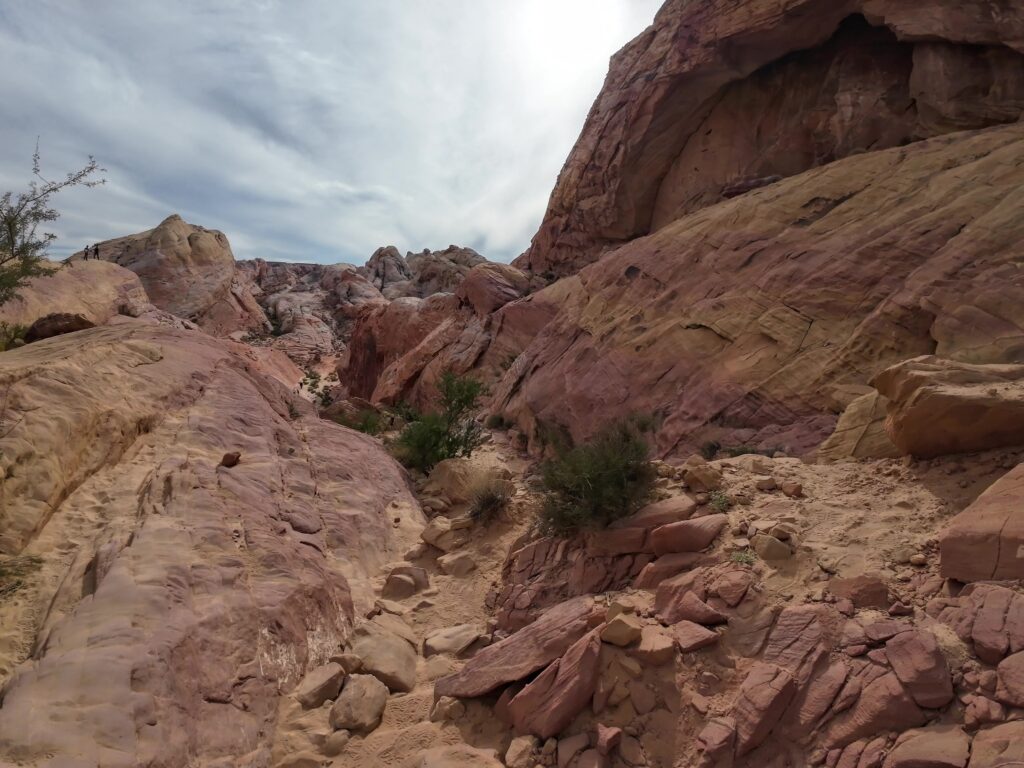
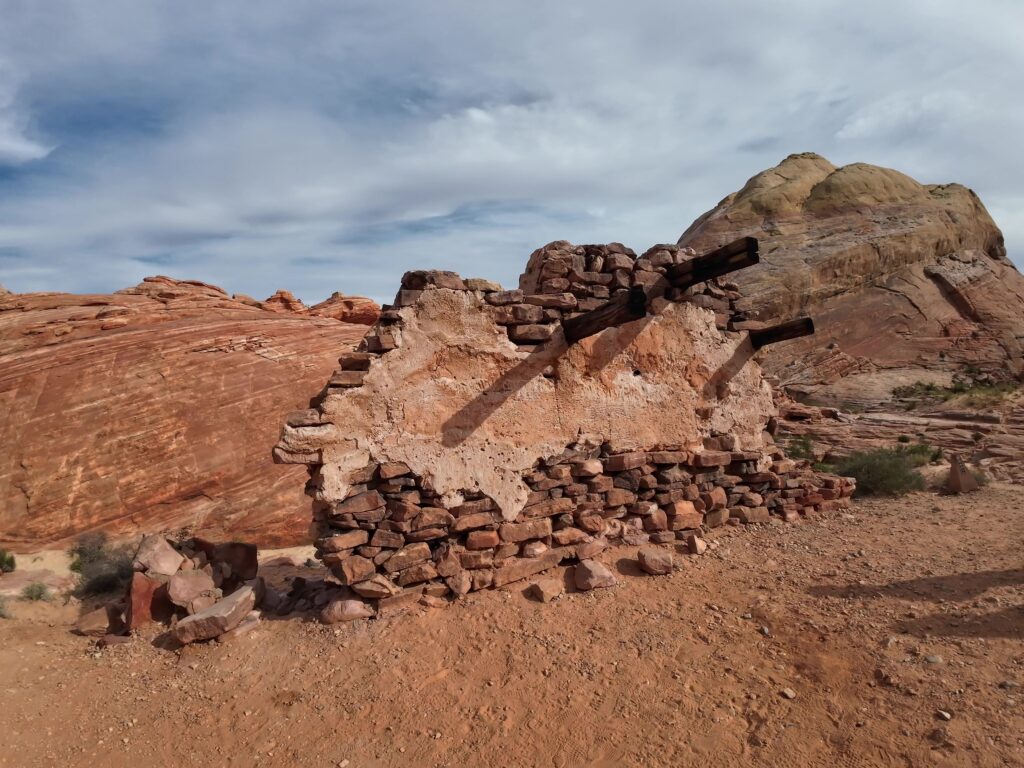
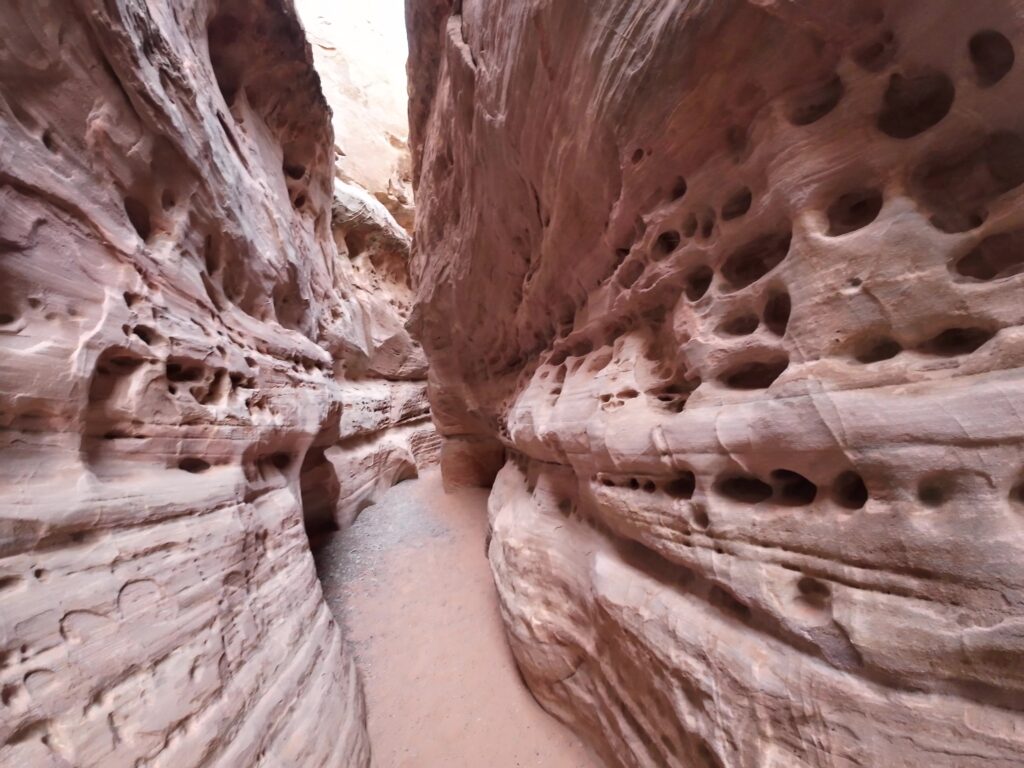
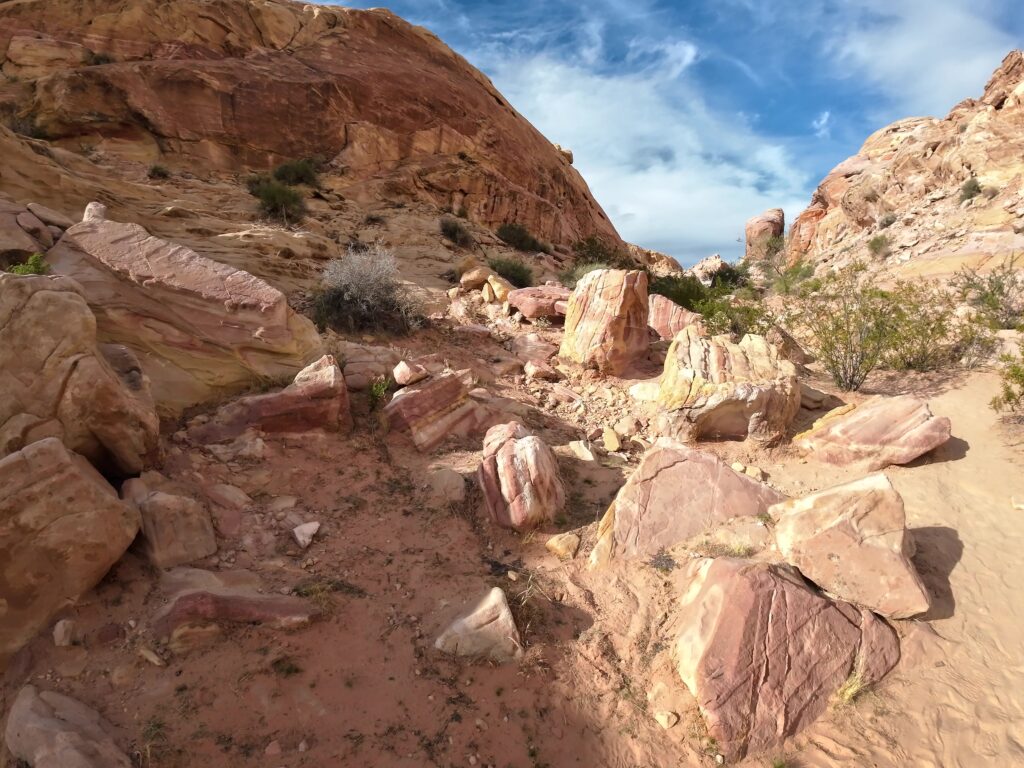
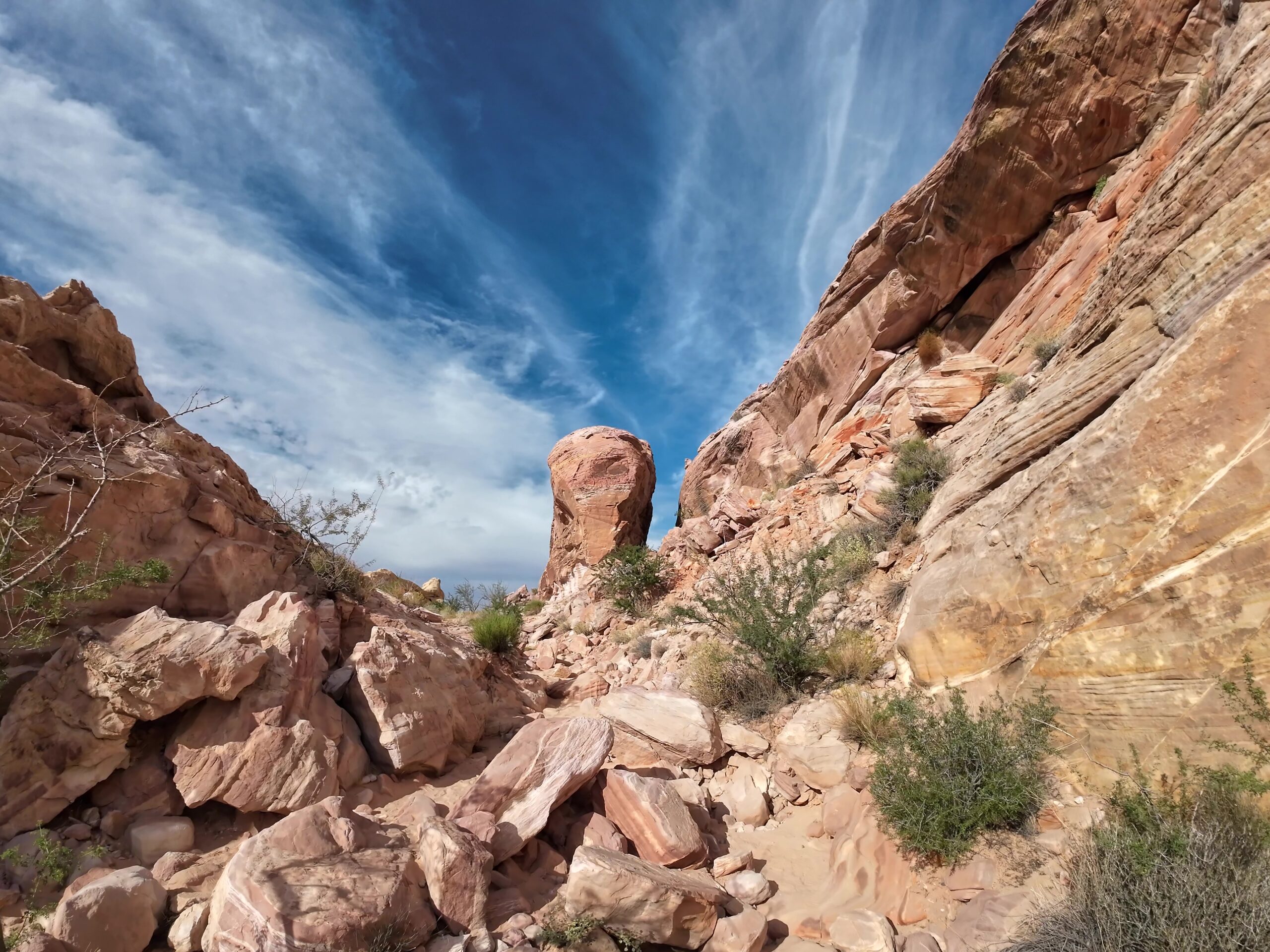
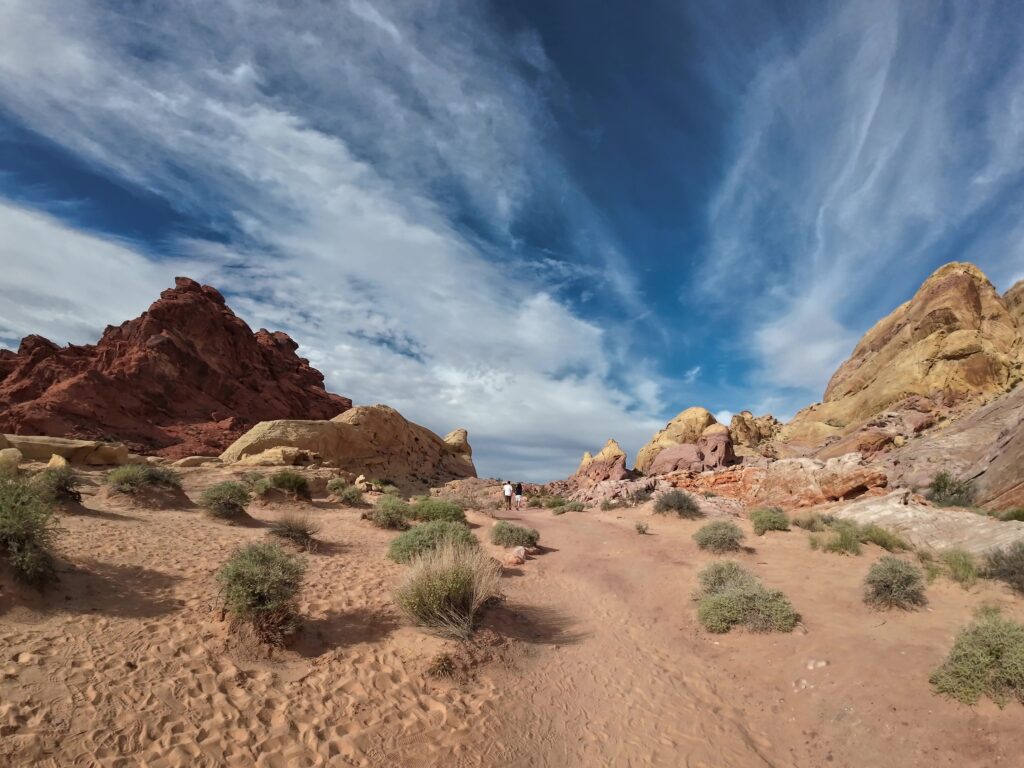
Visitor’s Center
The Visitor’s Center at Valley of Fire State Park is a comprehensive facility that provides visitors with essential information, interactive exhibits, and educational resources to enhance their experience in the park. As the gateway to this stunning natural wonderland located just an hour drive from Las Vegas, the visitor center serves as a hub for tourists seeking to explore the unique geology, history, and wildlife of Valley of Fire. Knowledgeable Park Rangers are on hand to offer guidance on hiking trails, rock formations, and points of interest within the park. The Visitors Center also houses a gift shop where visitors can purchase souvenirs and snacks for their journey.
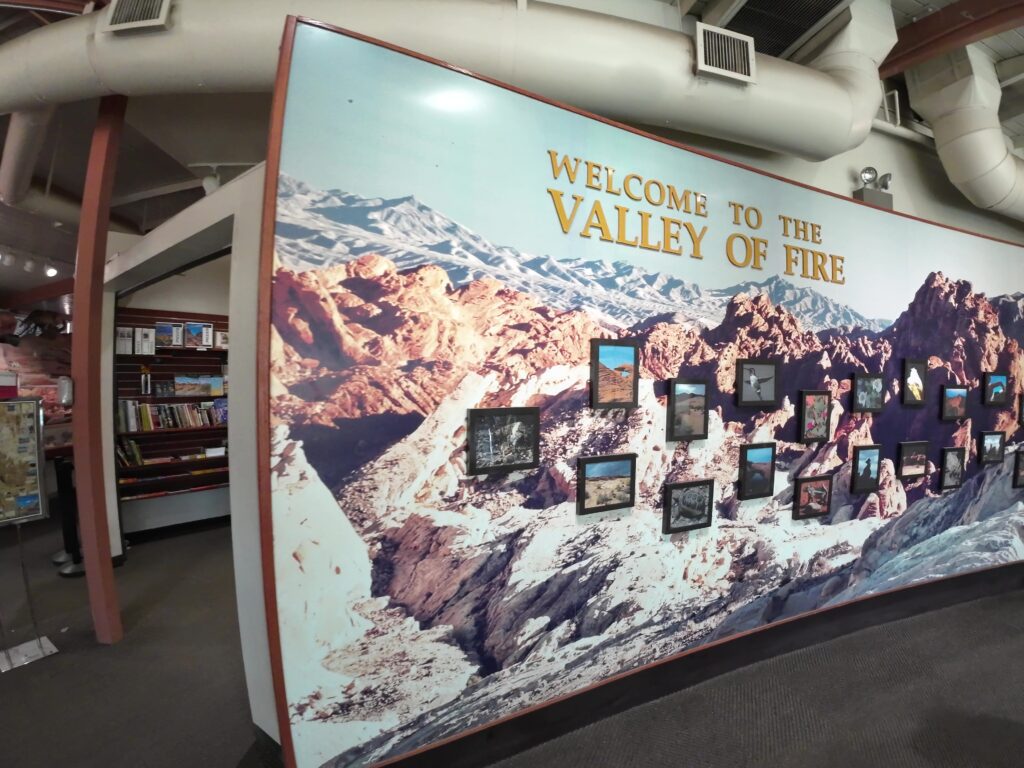
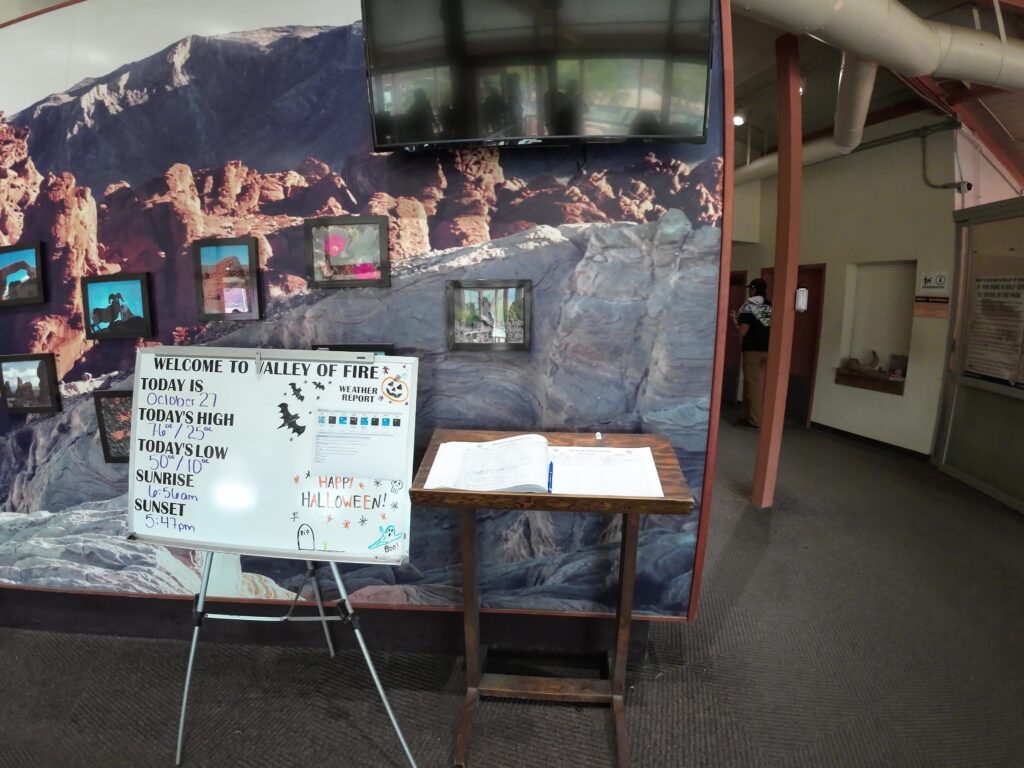
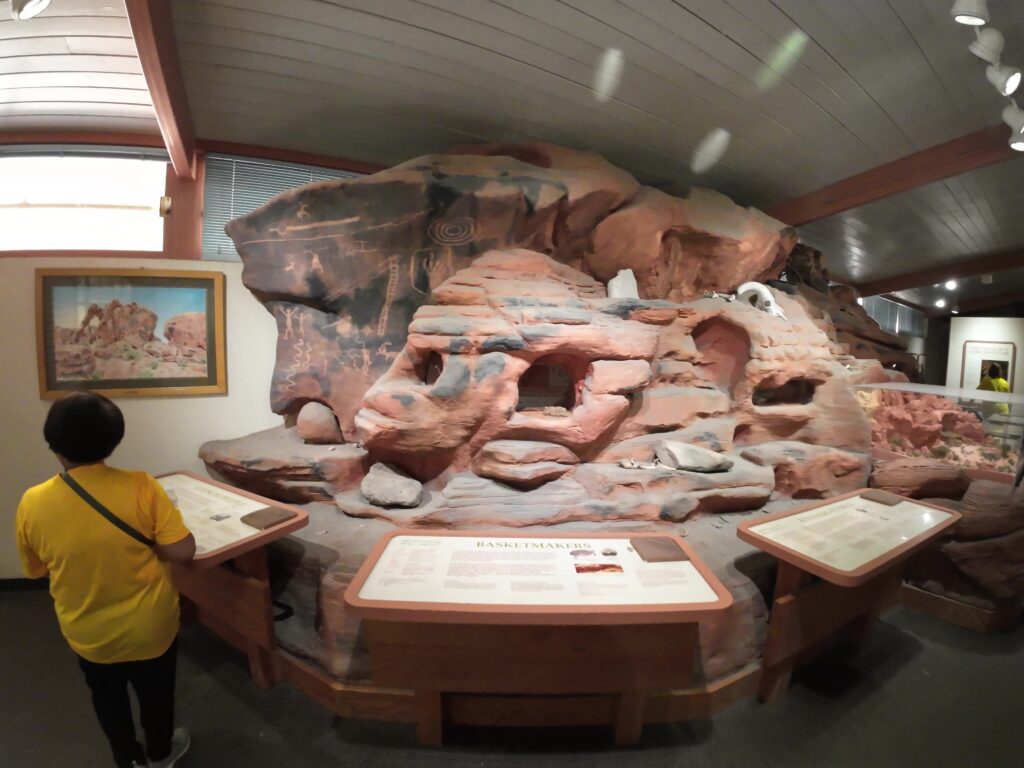
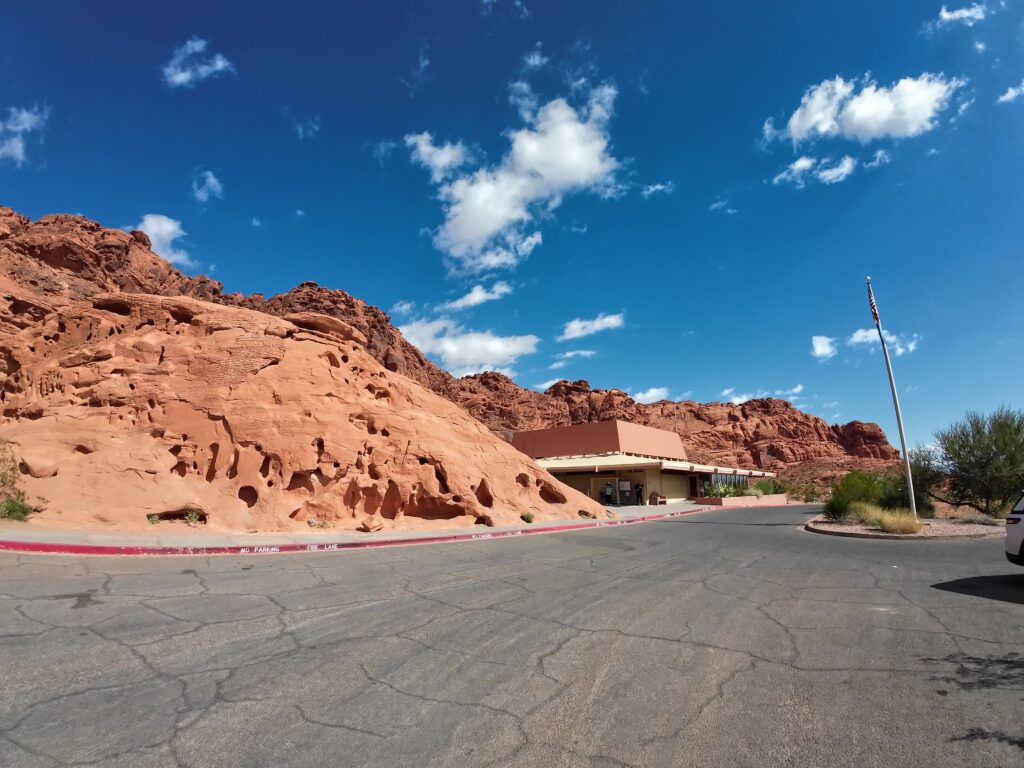
Atlatl Rock Campground
There are two campgrounds at the Valley of Fire State Park that have a total of 72 RV sites or tent spots for you to set up your tent or RV. Each spot has a table with shade, a grill, water, and bathrooms nearby. Plus, there’s a dump station to manage your waste and take a shower. You have to reserve a spot ahead of time, and you can only stay for up to 14 days out of a 30-day period.
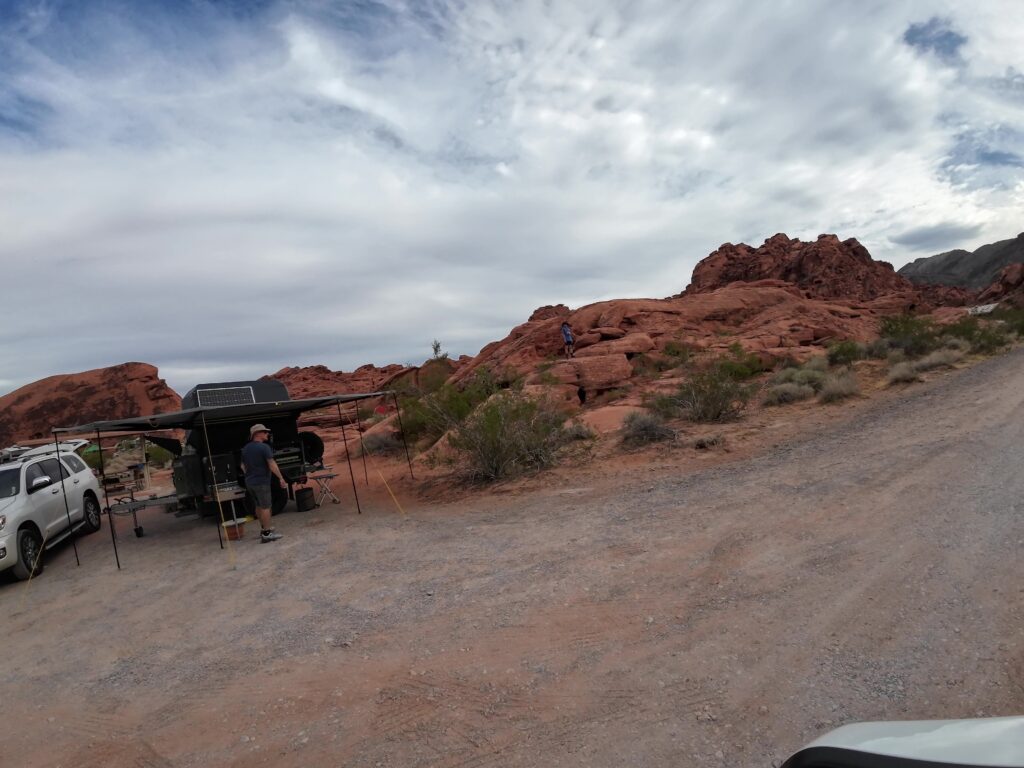
You might also get lucky and see a wild Ram or two.
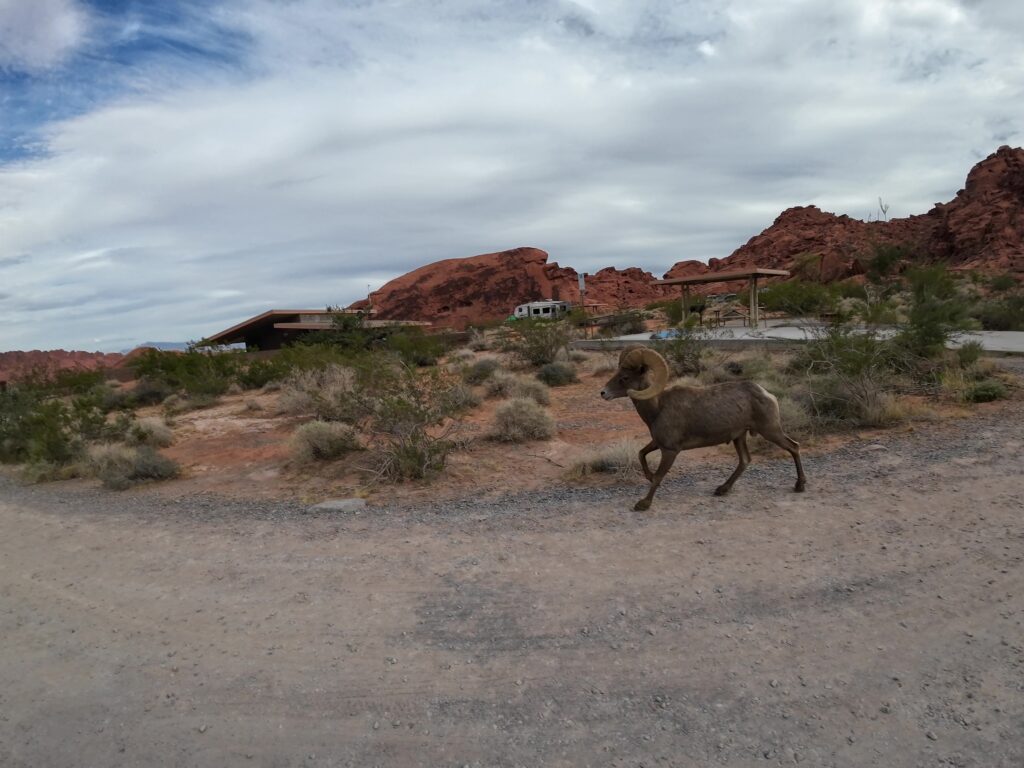
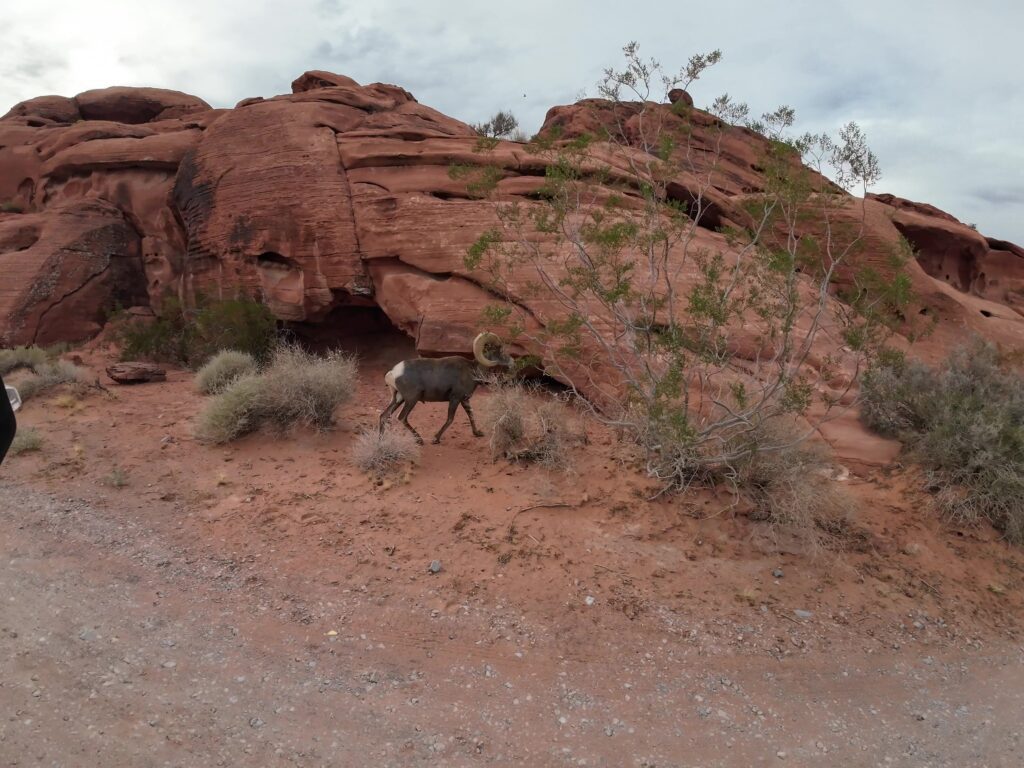
What to Expect on the Trails?
Most of the trails are at a moderate level of exertion. Please ensure you have plenty of water and consider doing the hikes either in the morning or late afternoon as temperature cools off, especially in the warm summer months
Where is the Valley of Fire State Park?
The Valley of Fire State Park is a short 1-hour drive from the Las Vegas Strip. It’s right next to Lake Mead National Recreation Area and not too far from Overton, Nevada. It’s a great place to explore and see some awesome desert scenery! You need to head north on Interstate 15 approximately 35-40 miles. You will get off at Exit 75 and head east on the Valley of Fire Highway. Drive for approximately 17 miles where you will reach the West Entrance Fee Station.
You can also take the more scenic route and see Lake Mead as well: Take the I-15 North to Lake Mead Blvd. Turn Right and head East to Lakeshore Road (NV-166). Turn Right onto Northshore Drive (NV-167) and follow Northshore to the east entrance to Valley of Fire.
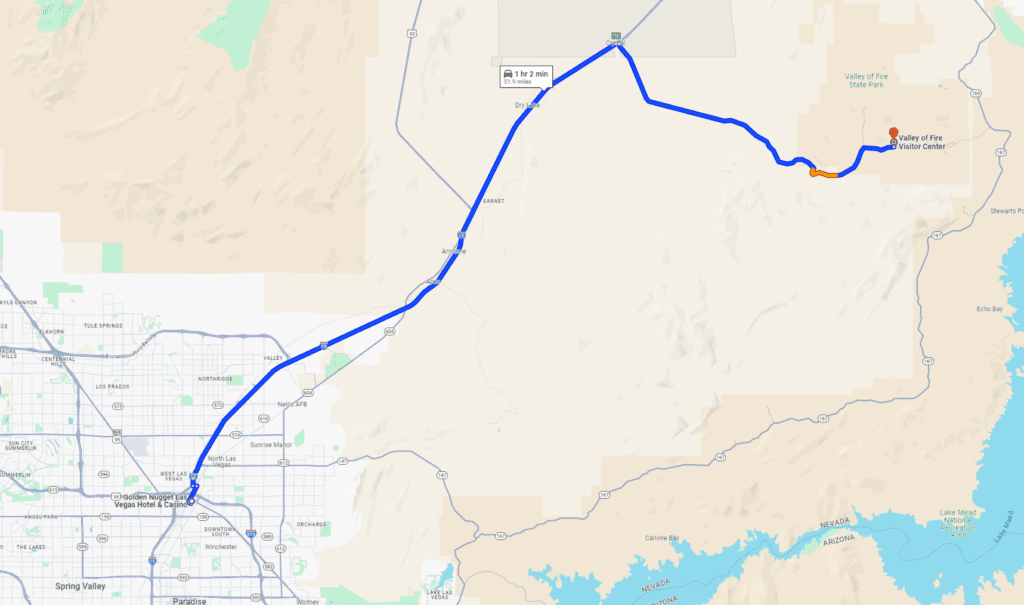
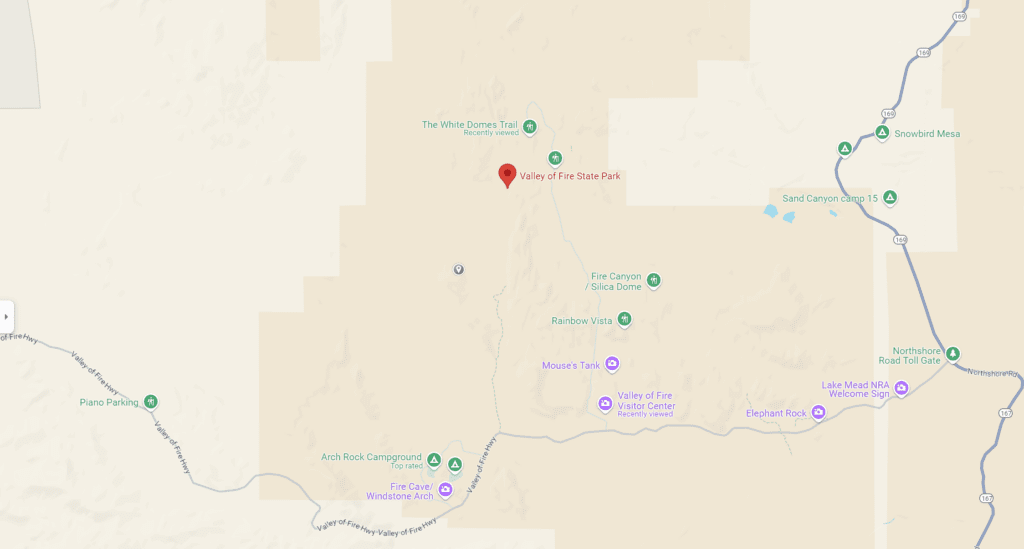
Valley of Fire Fees
- Entrance $10/vehicle ($8/vehicle Nevada resident) at fee station or self-pay booth
- Camping $20/night plus $10/night for utility hook-ups ($2/night discount Nevada resident)
- Annual Entrance Permit $75
- Group Use Area Reservation $25 plus the entrance fee per vehicle
- Group Camping Reservation $25 plus camping fee per vehicle
- Wedding Reservation Fees paid by wedding company on your behalf
As always, check the Valley of Fire State Park website to confirm up-to-date cost of fees.
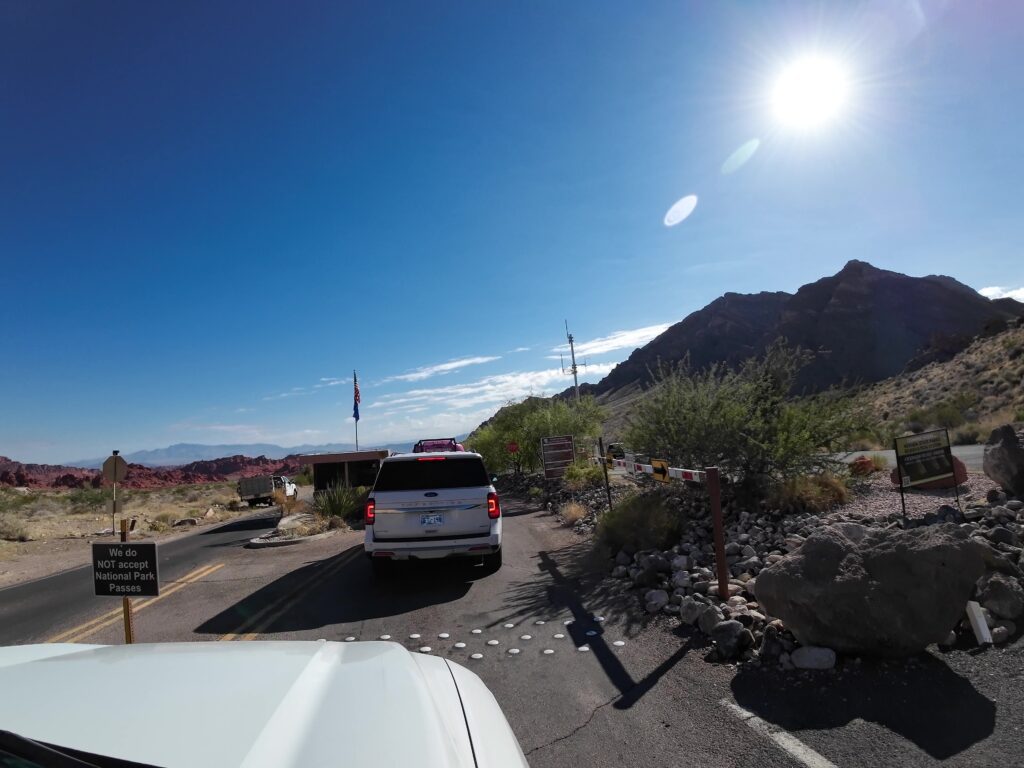
Conclusion
The Valley of Fire State Park near Las Vegas was an incredible area to explore and see all the natural beauty. We greatly enjoyed the park and intend to go back again. It was much nicer in our appreciation than the Red Rock Canyon Park right outside of Las Vegas. Both were nice but we really enjoyed the fire wave and other rock structures at the Valley of Fire.
And also check out our other posts on attractions off the Las Vegas Strip, including the Red Rock Canyon Trails and Overlooks, the Grand Canyon West, the Old Historic Railroad Tunnel Trail to Hoover Dam, Fremont Street Experience, Ferguson Hotel, and other cool and fun attractions off the Vegas strip.
Also, check out all our other videos covering the many fun and historical attractions we have on our Travel with D & E web site and YouTube channel. Do us a favor, and subscribe, that way you know when we put a new video out. Like the video and share it with your family and friends. They’re gonna love it.
Remember to put a comment below if you checked out the Valley of Fire State Park yourself.

Leave a Reply